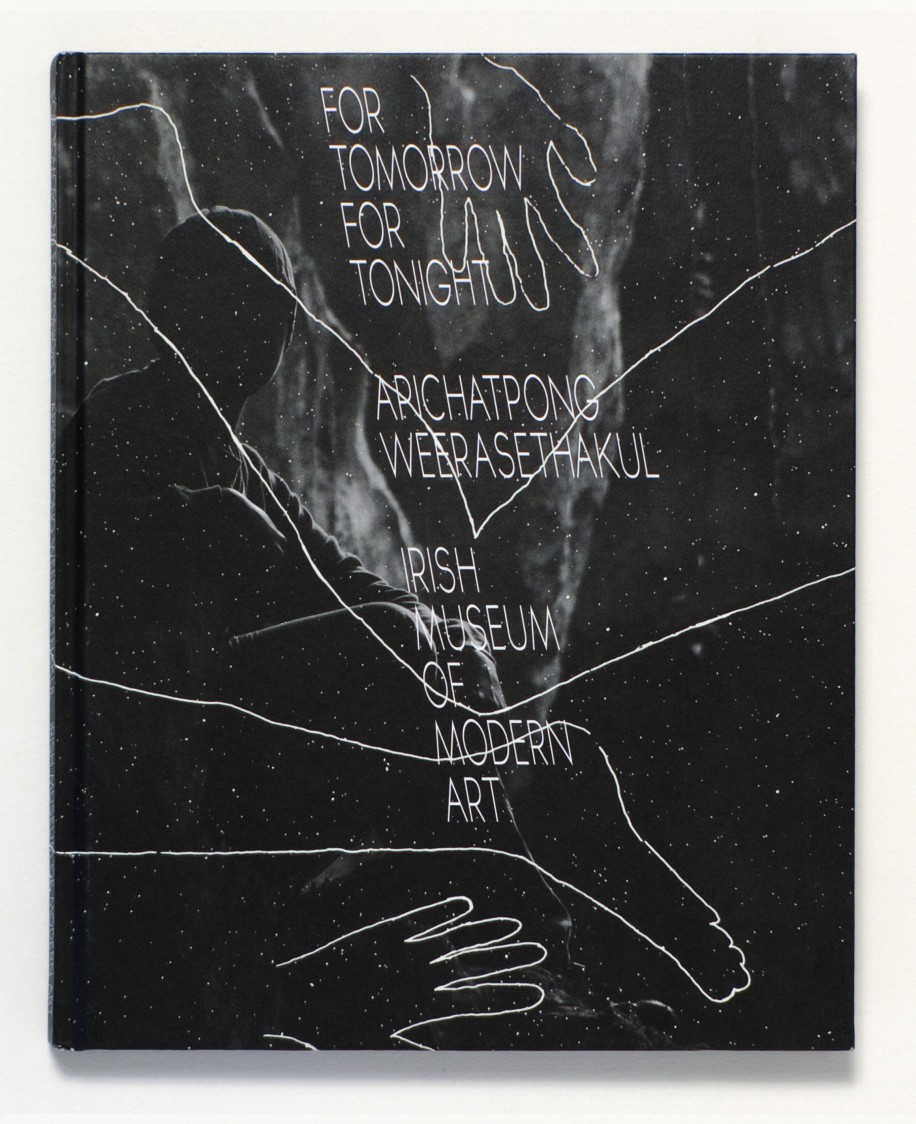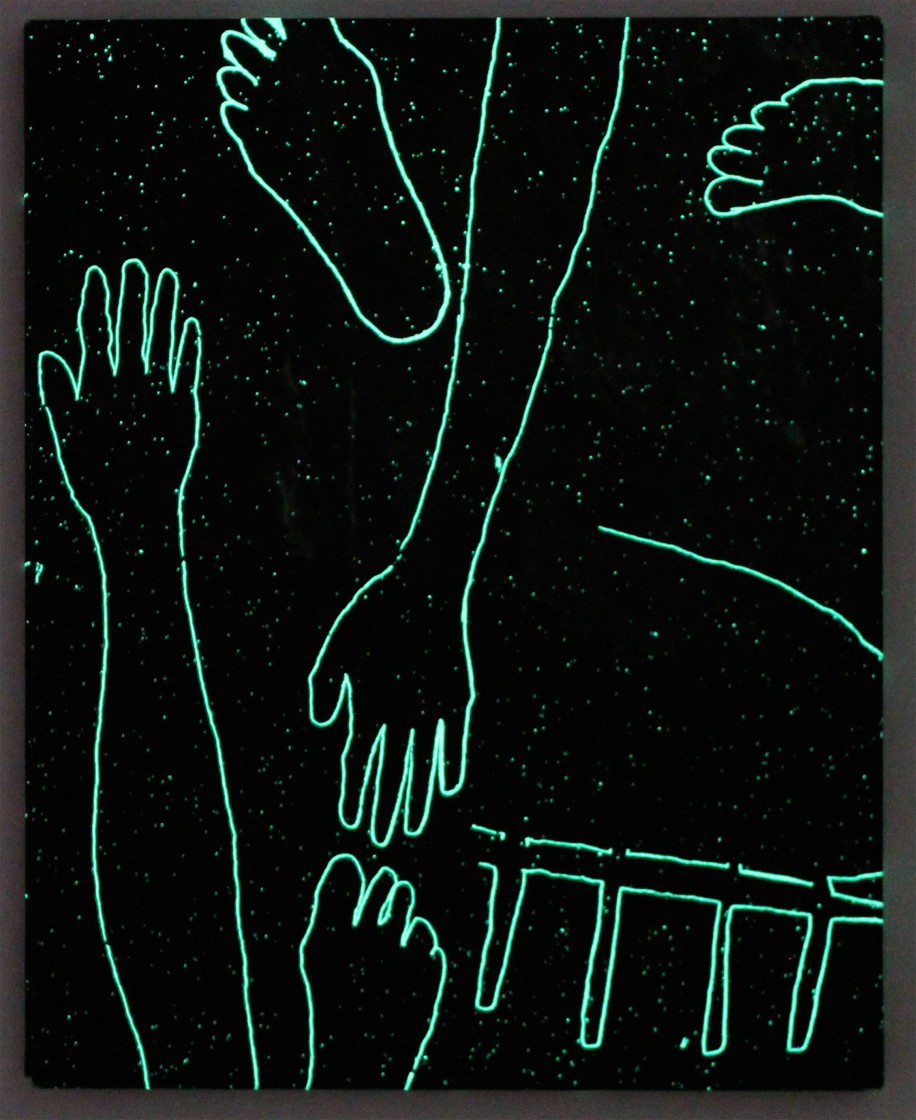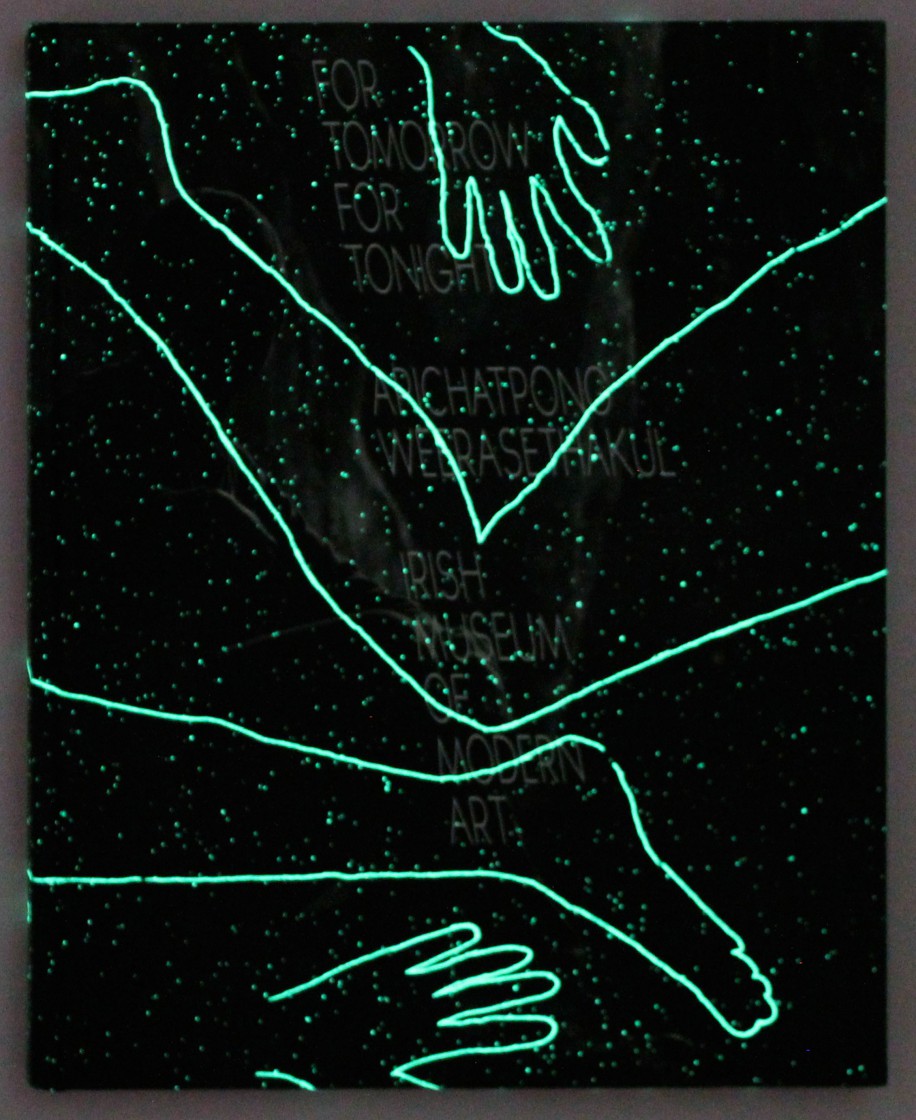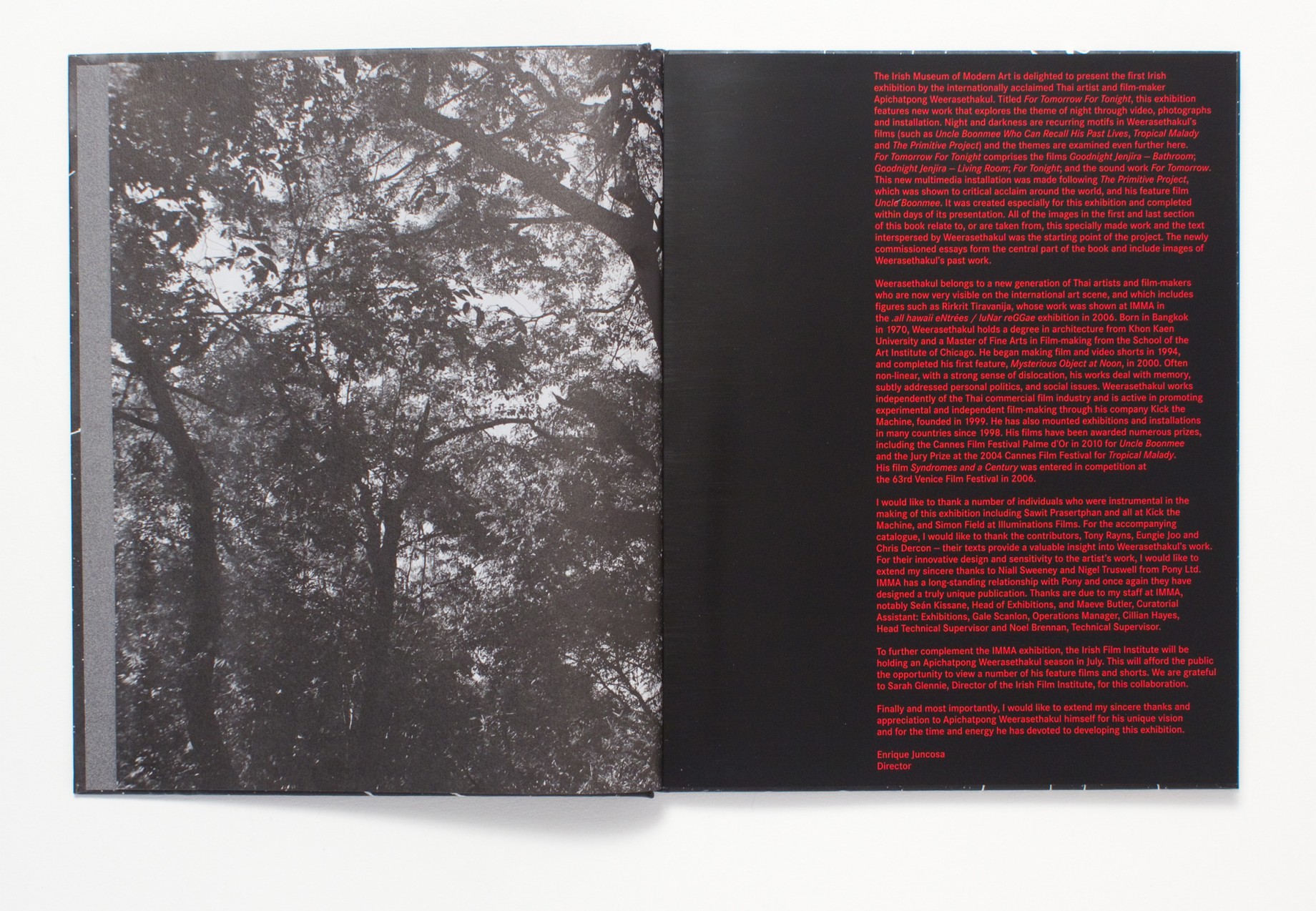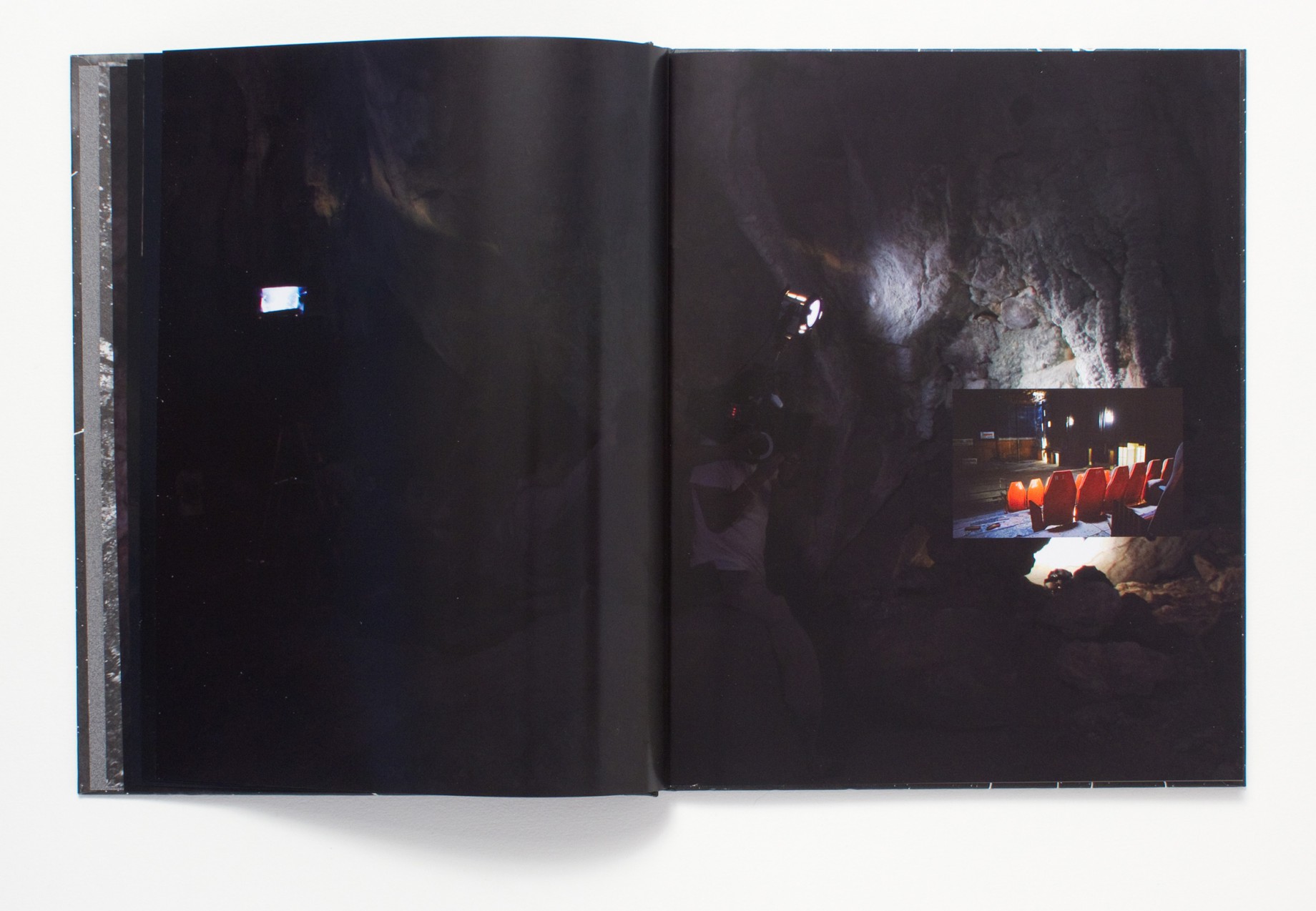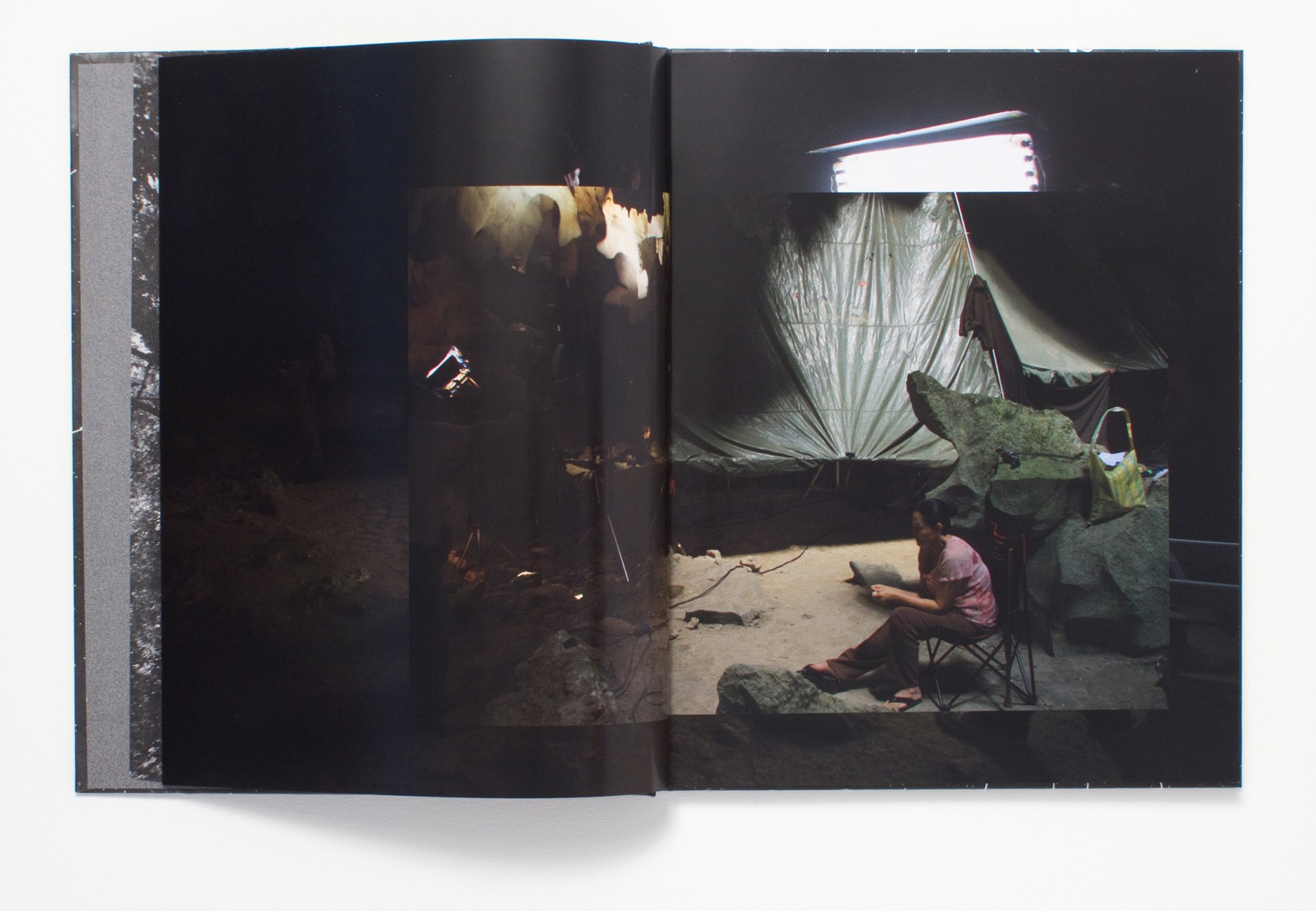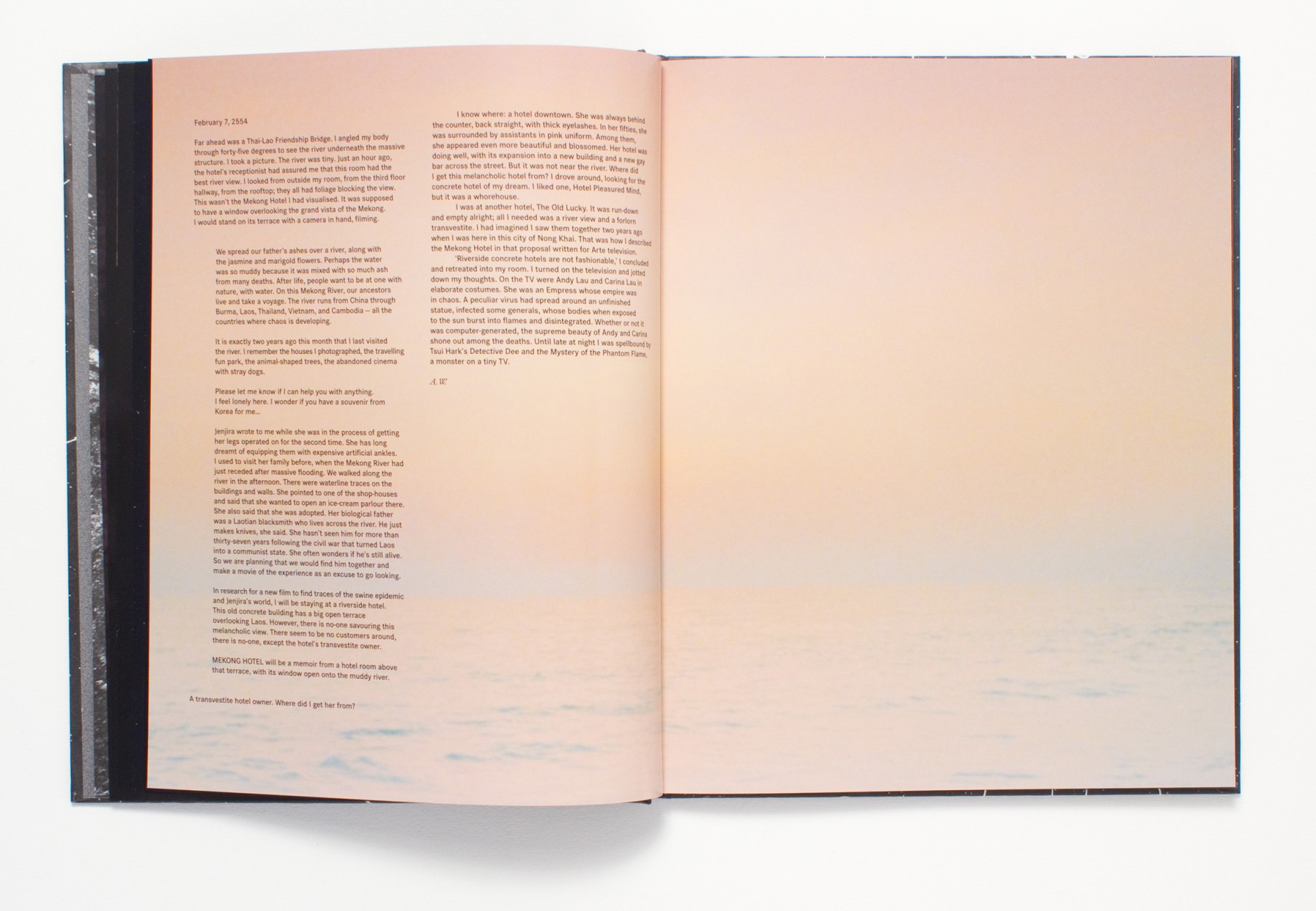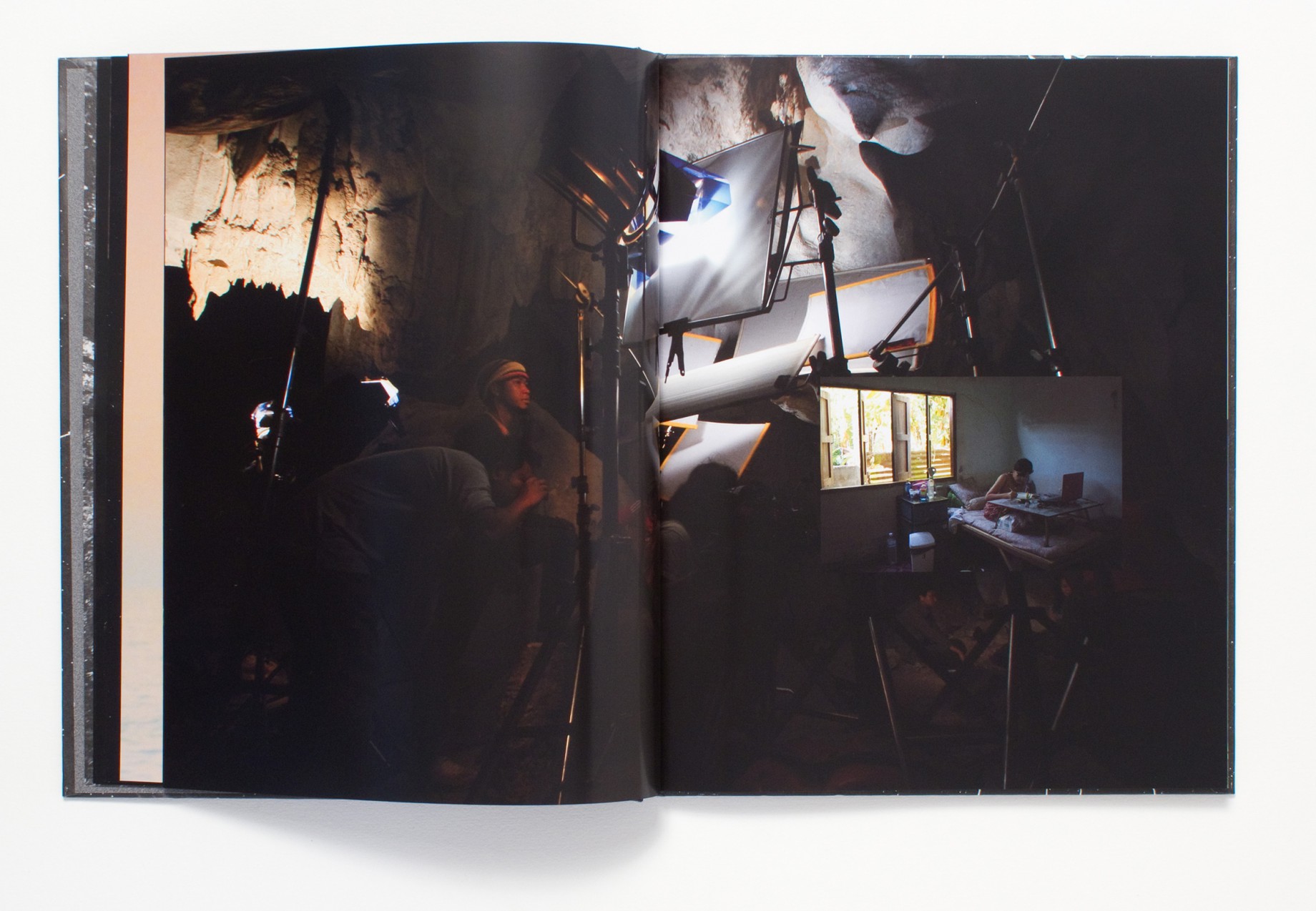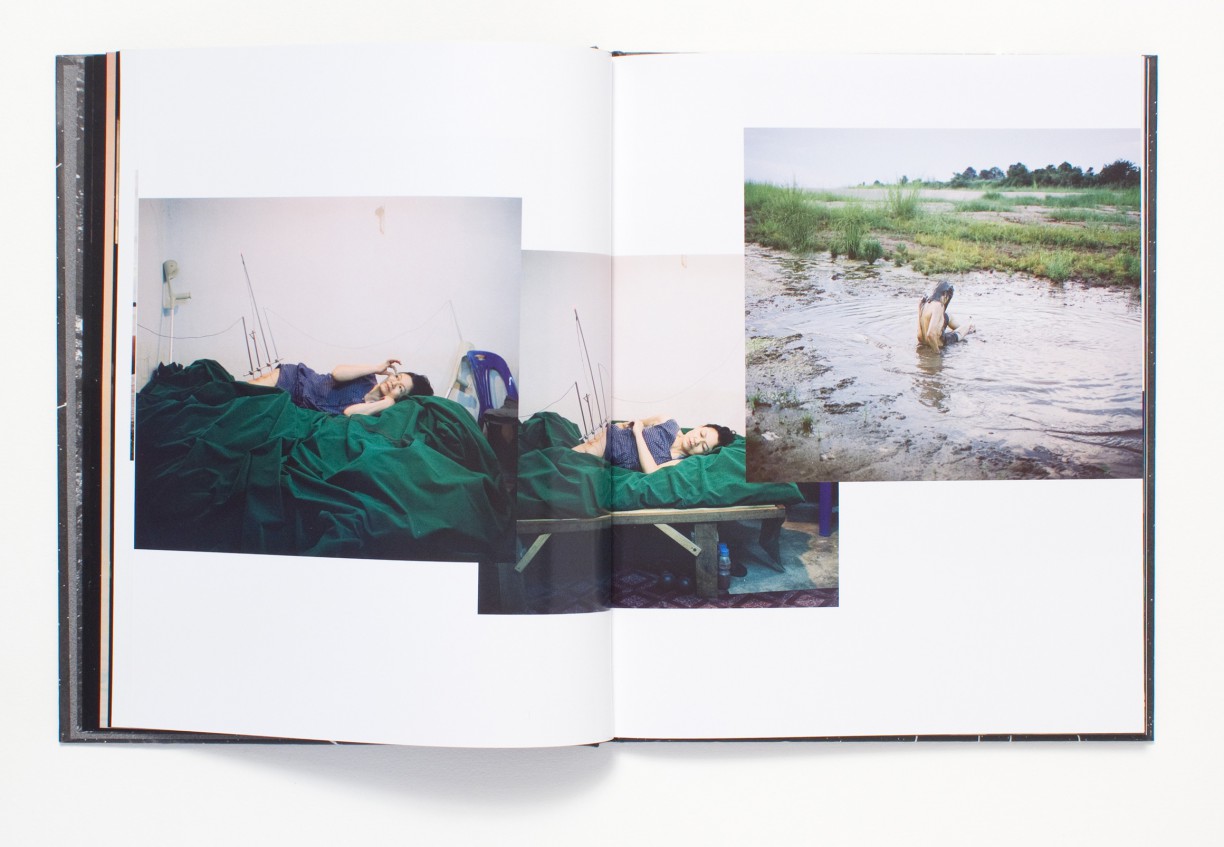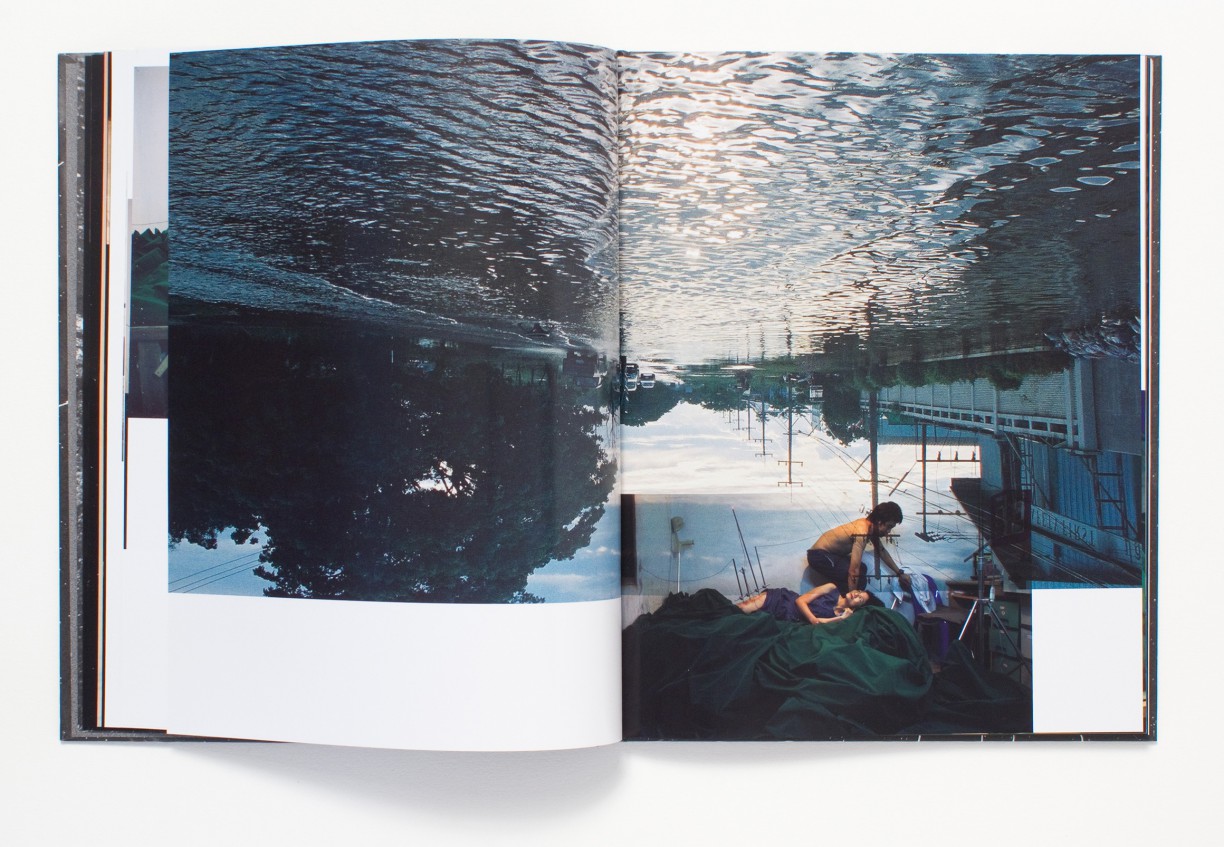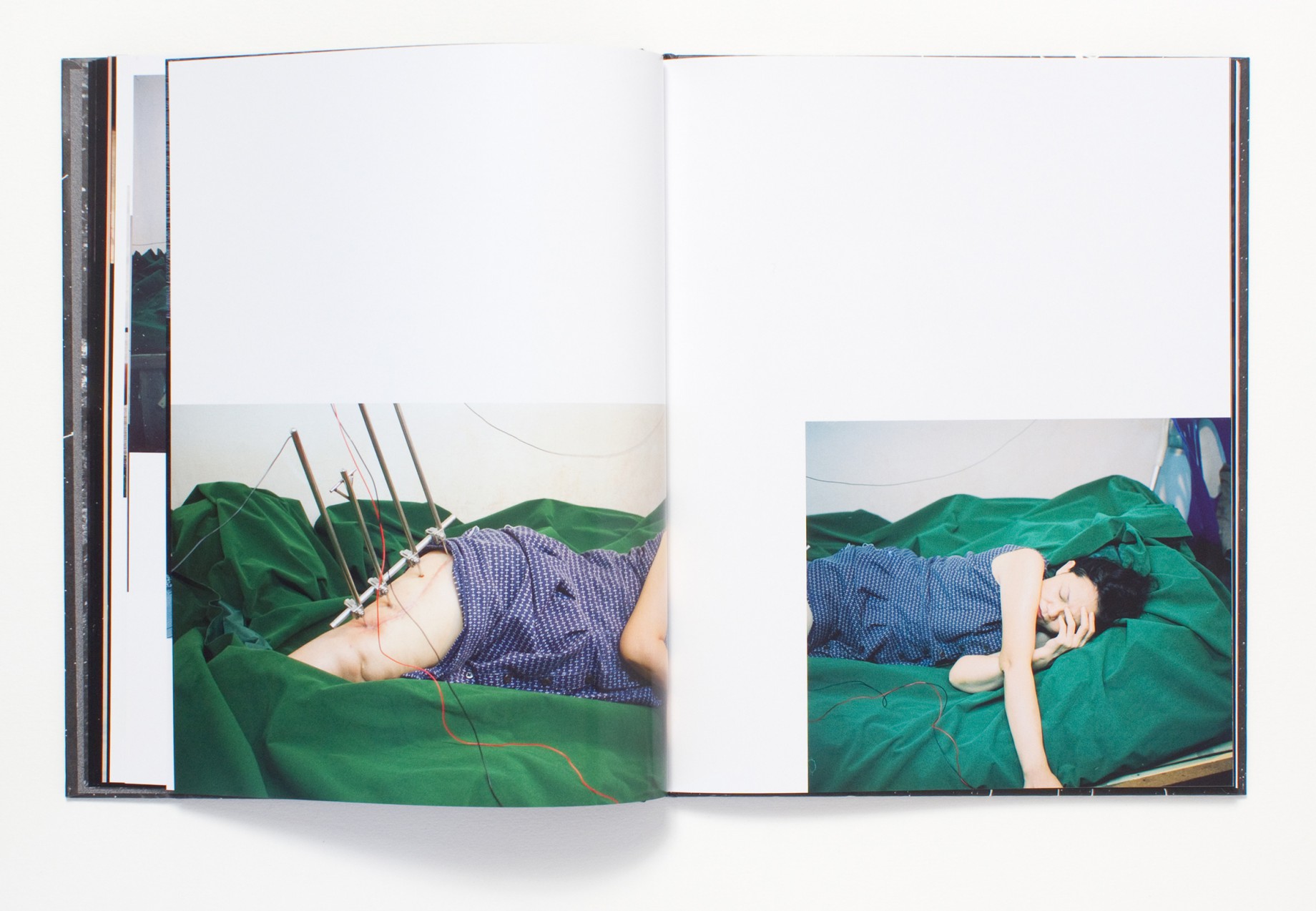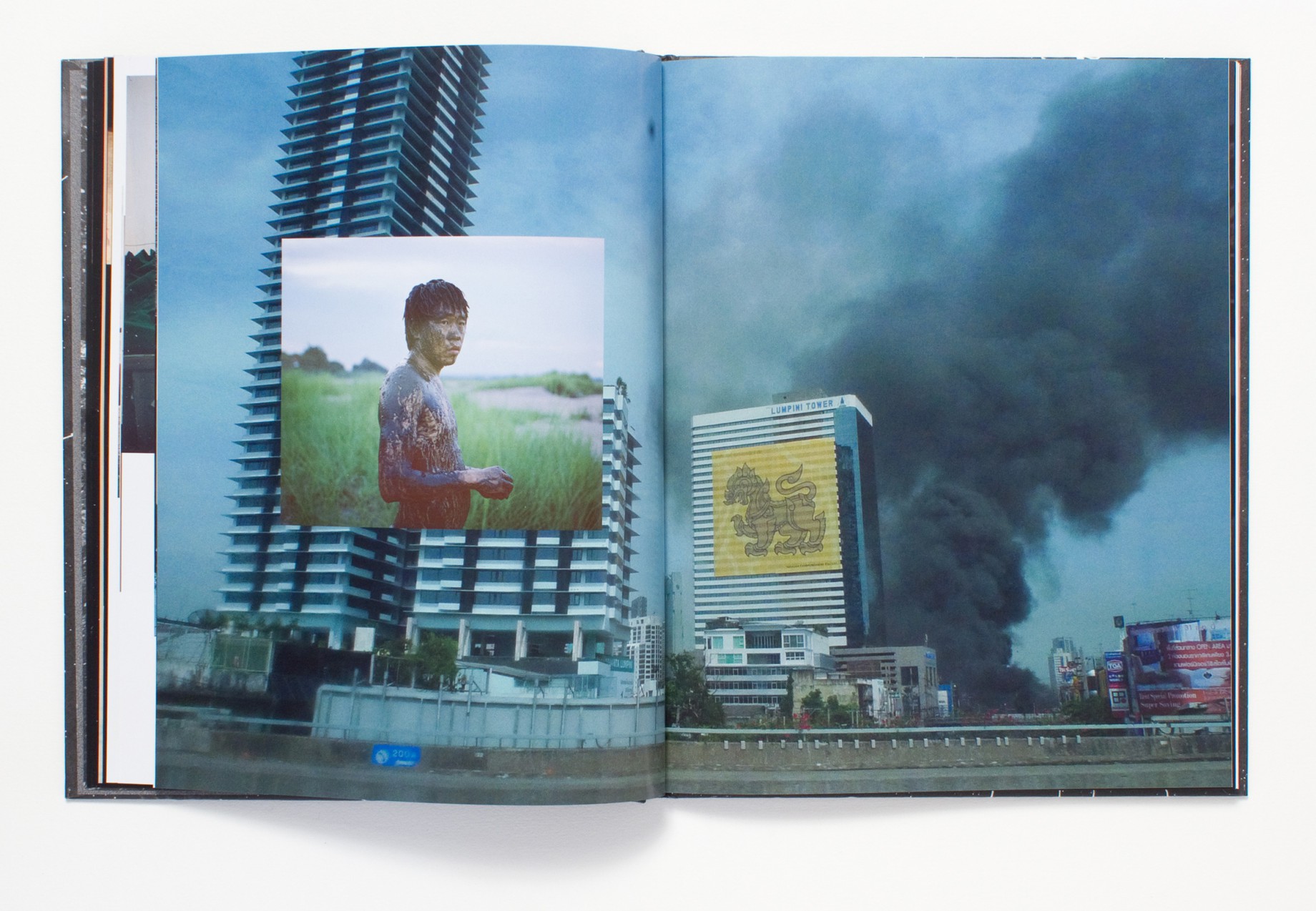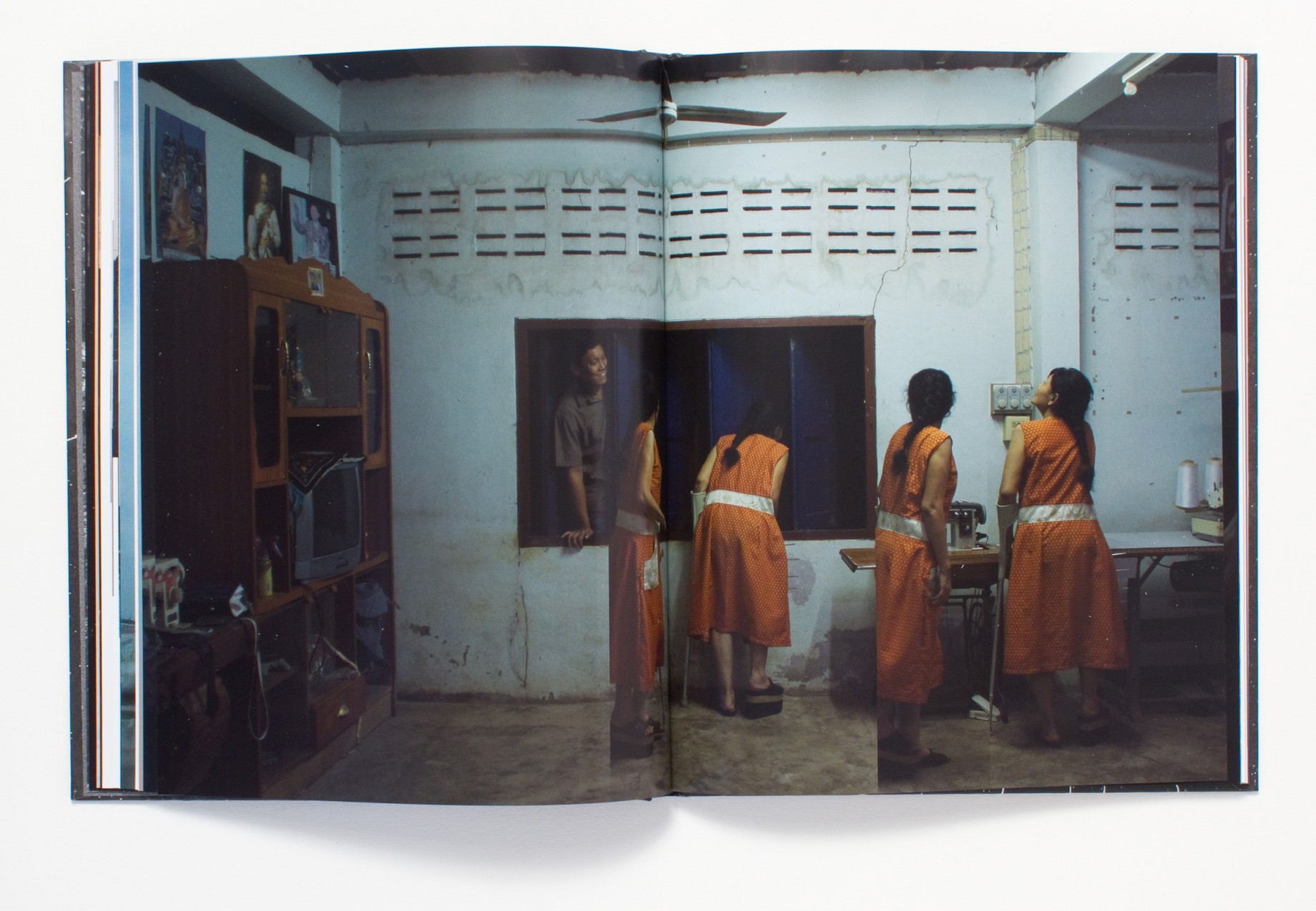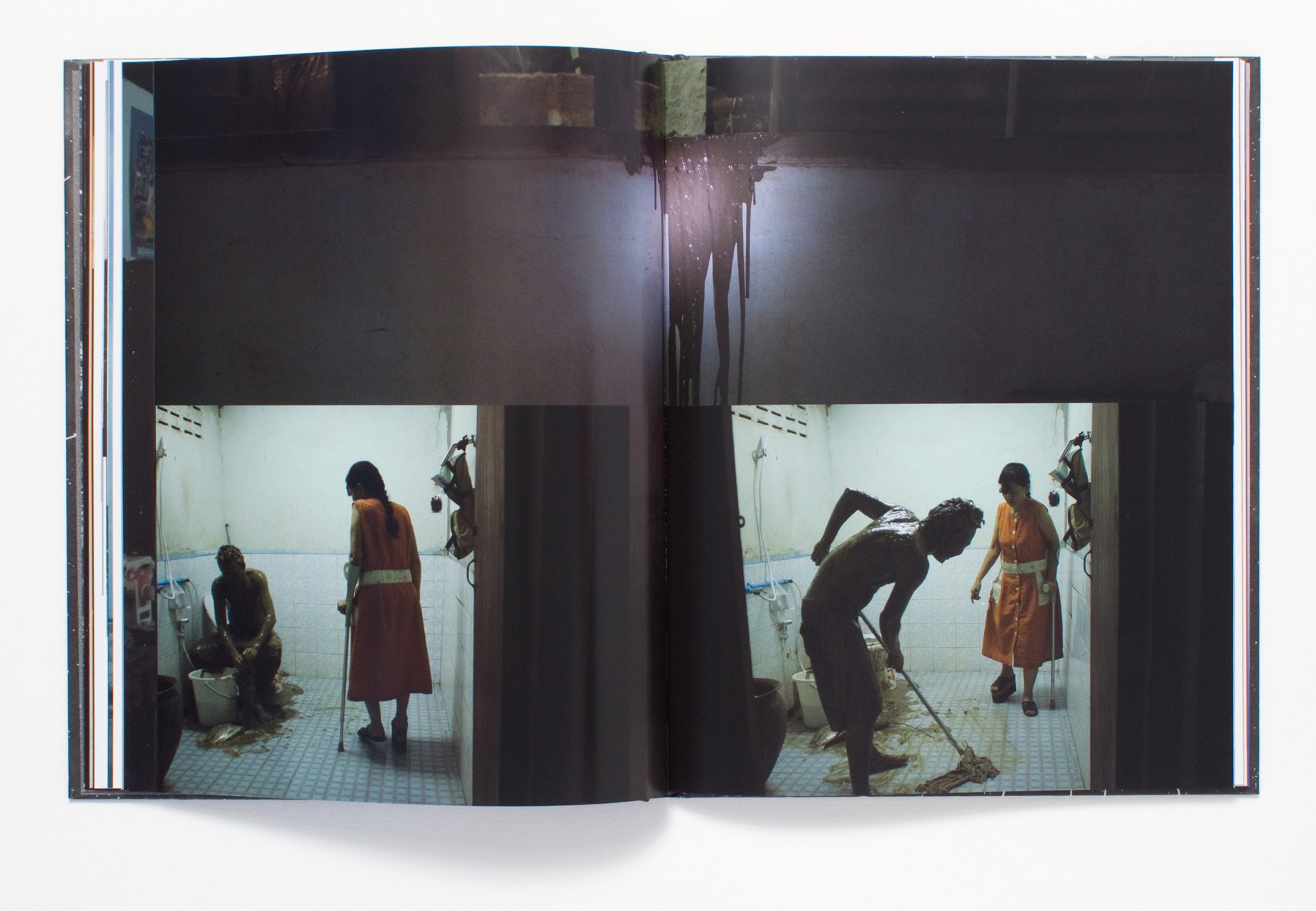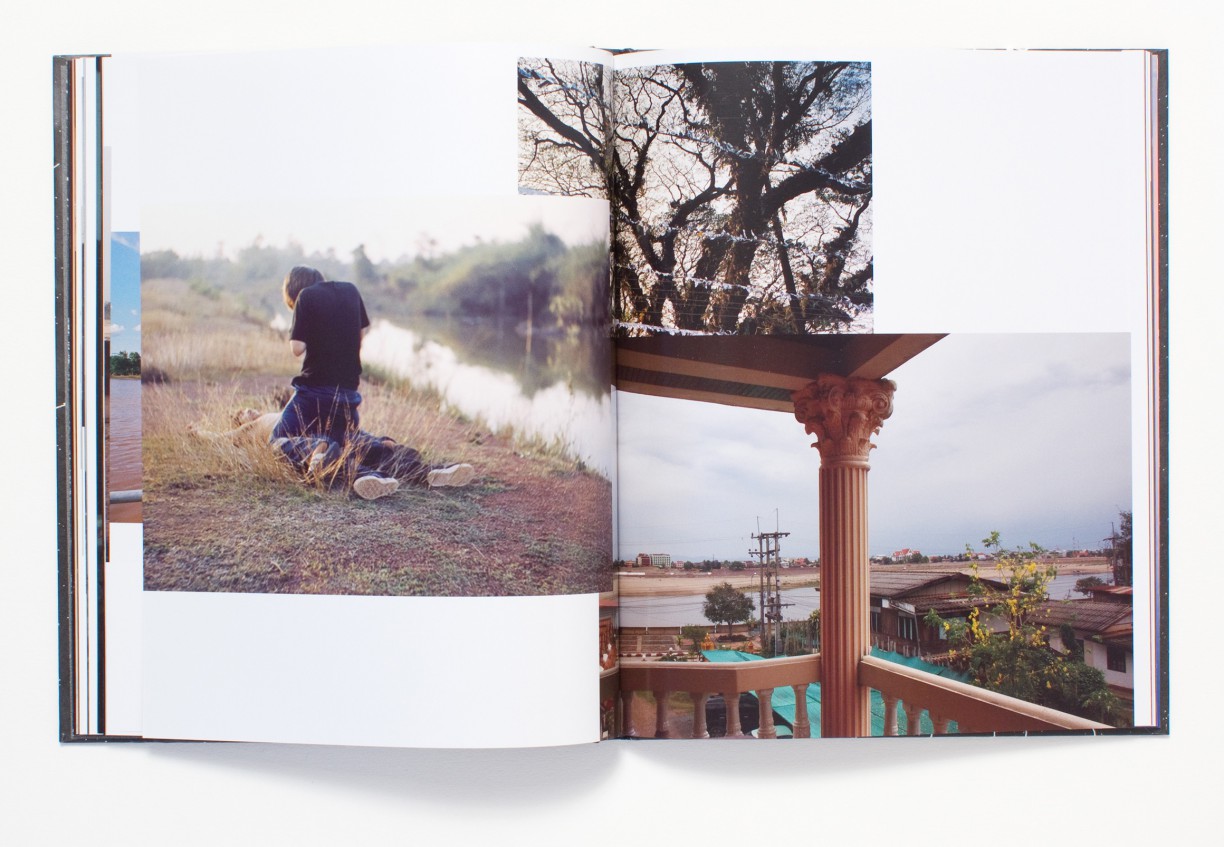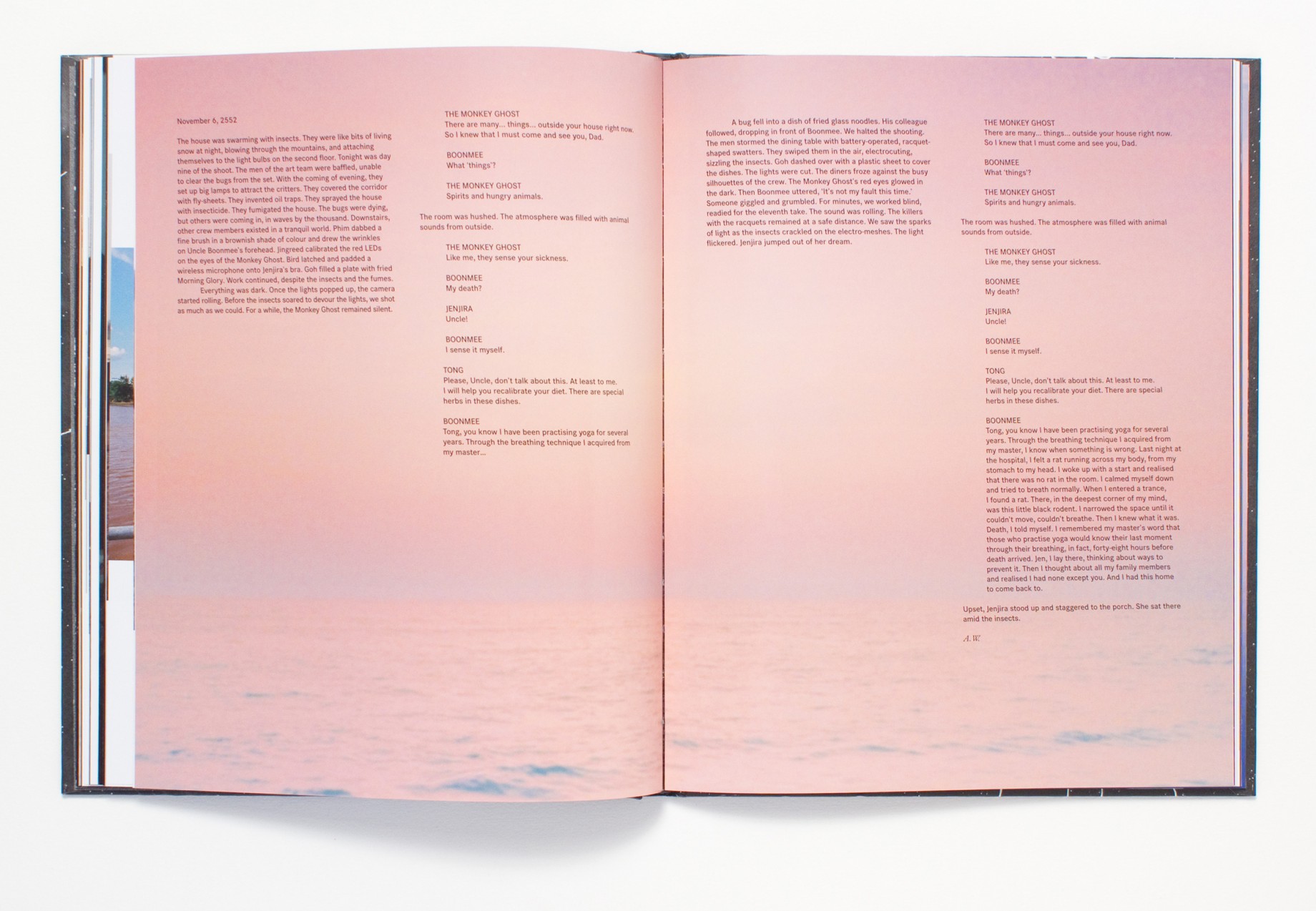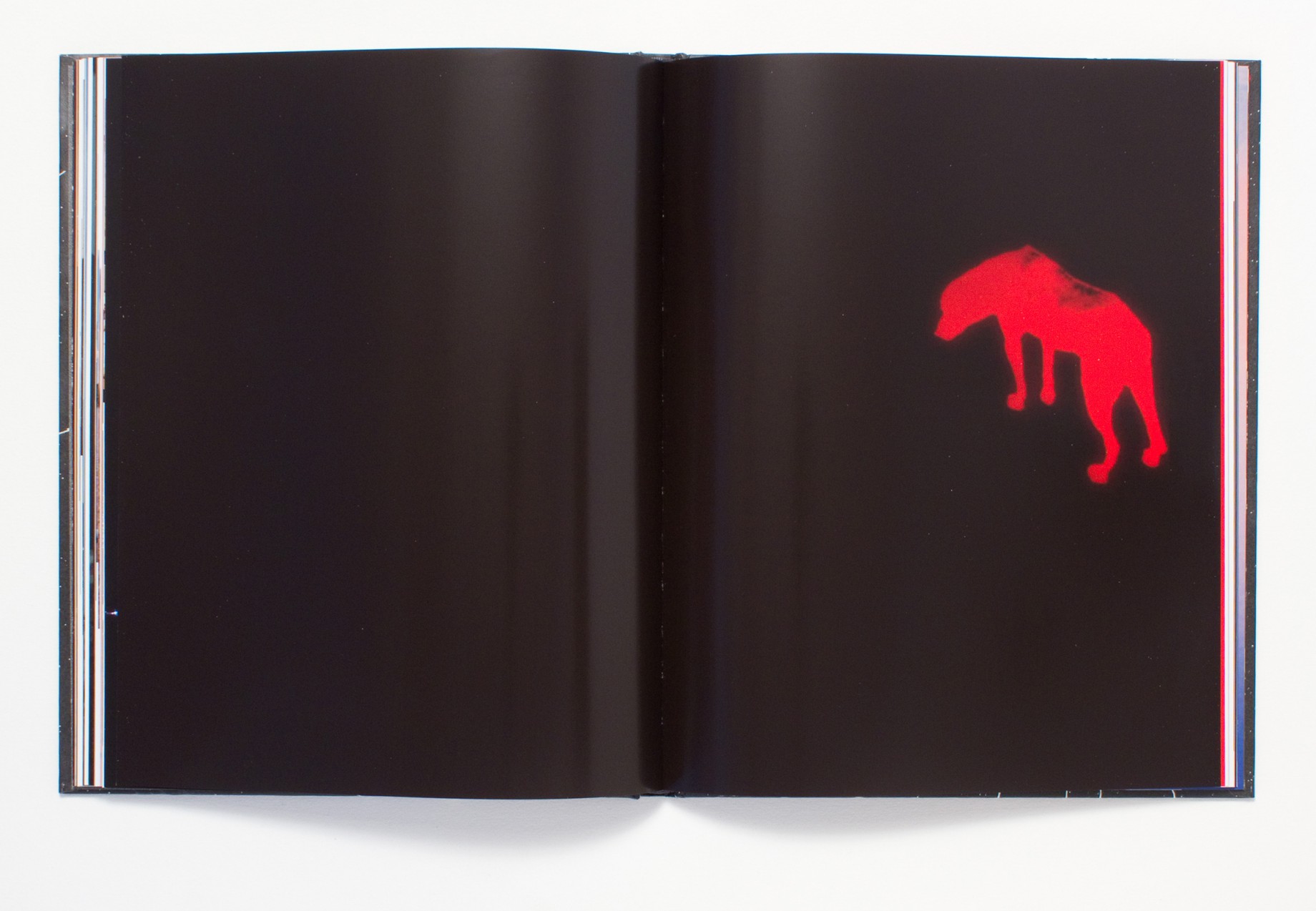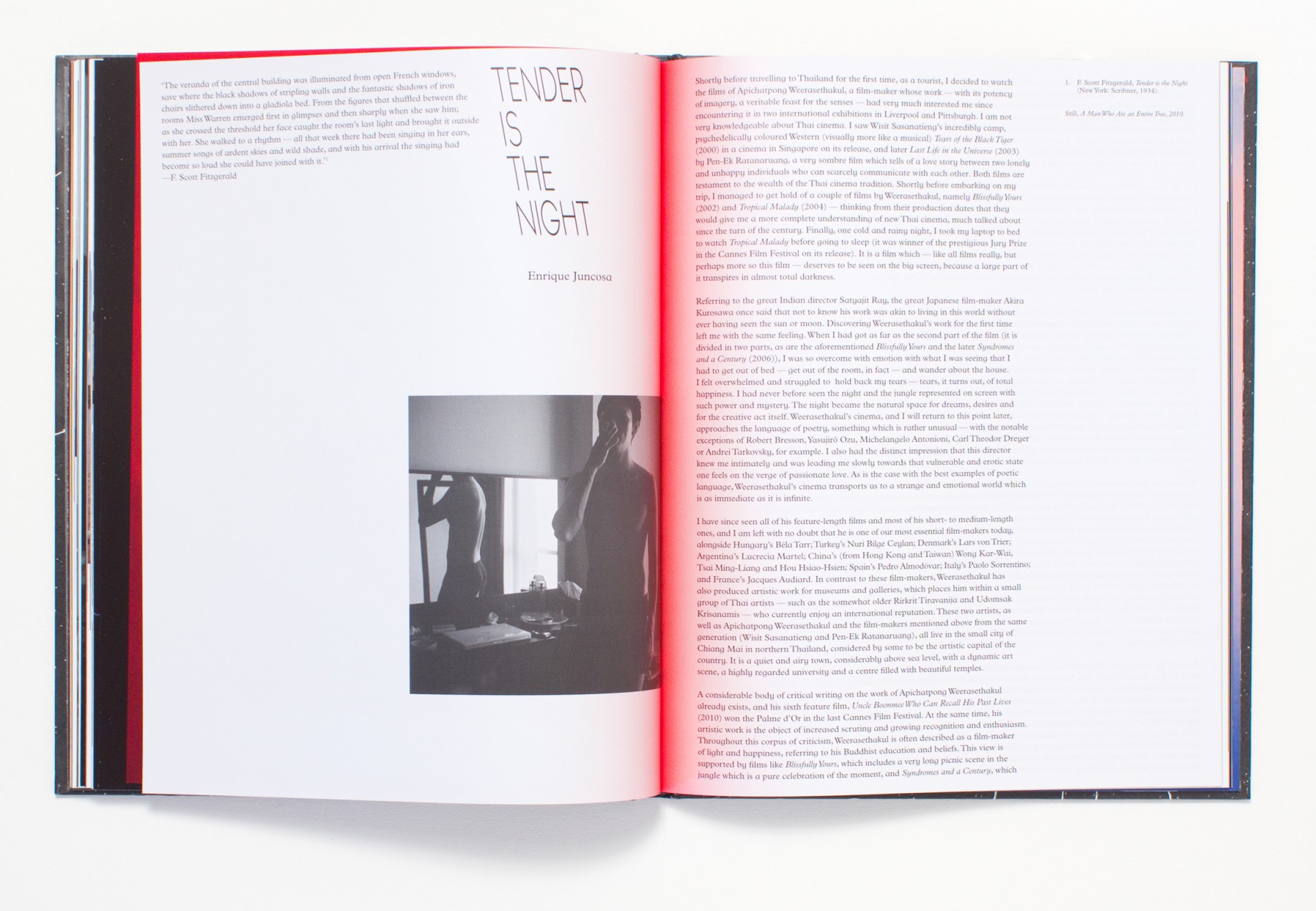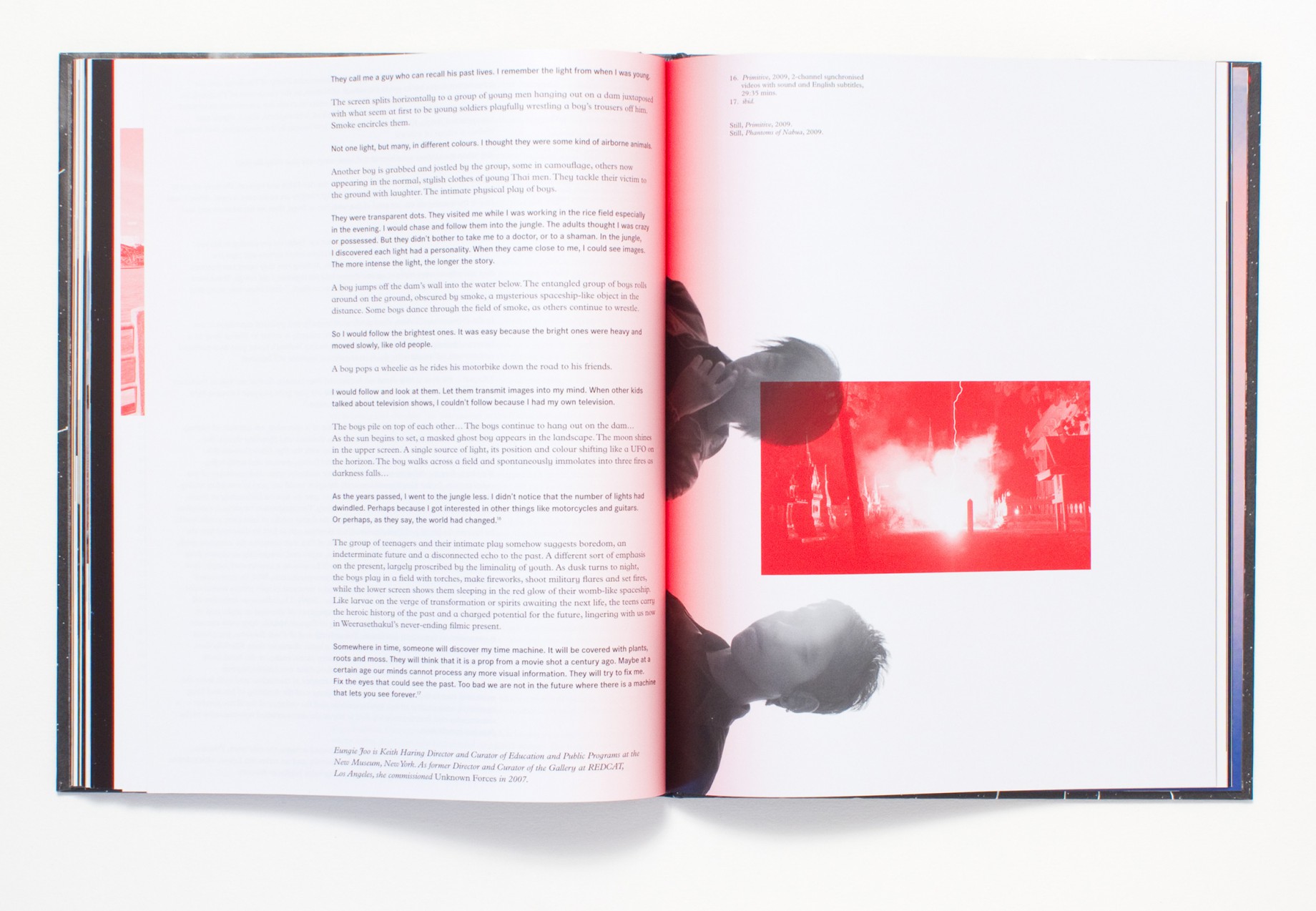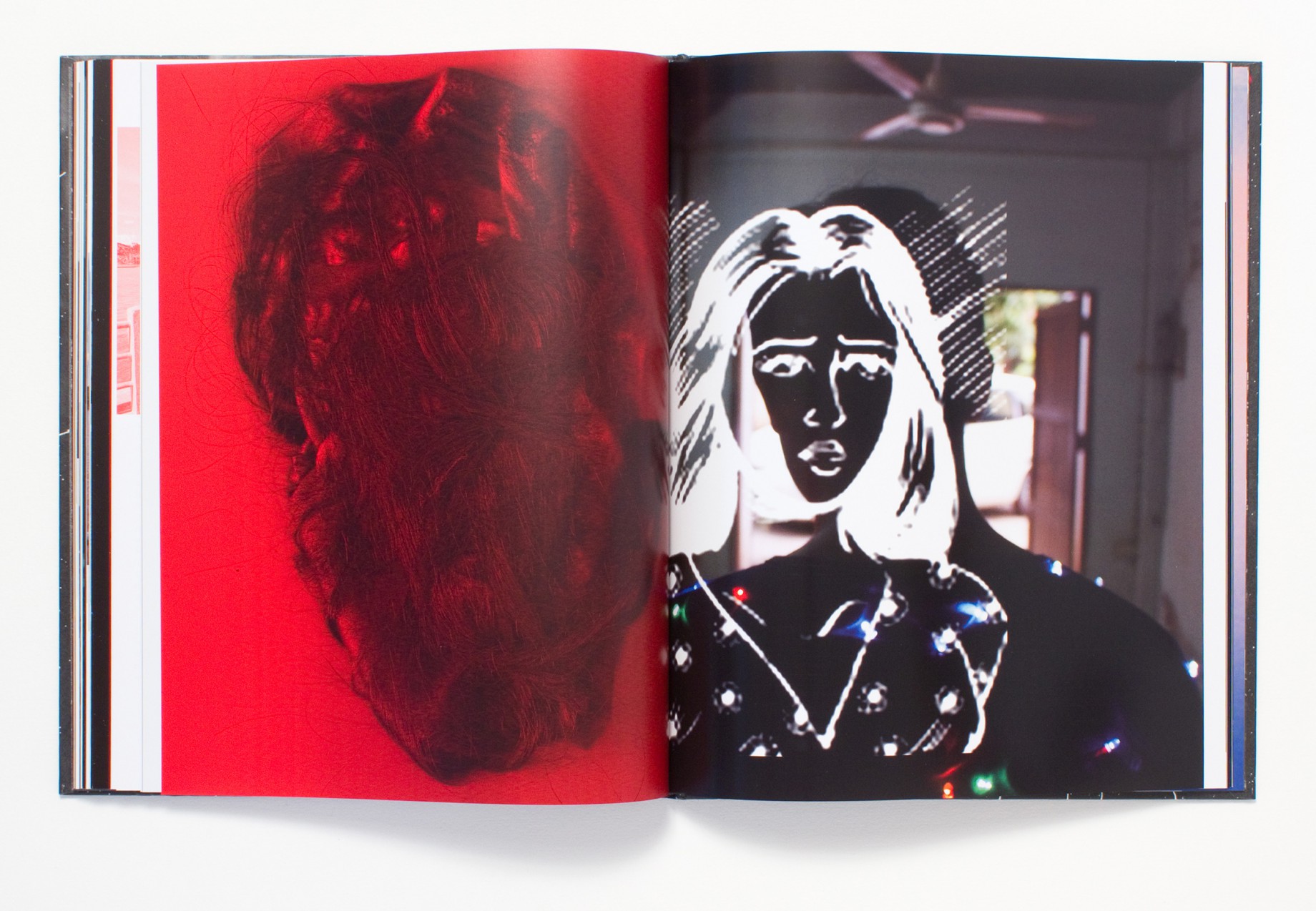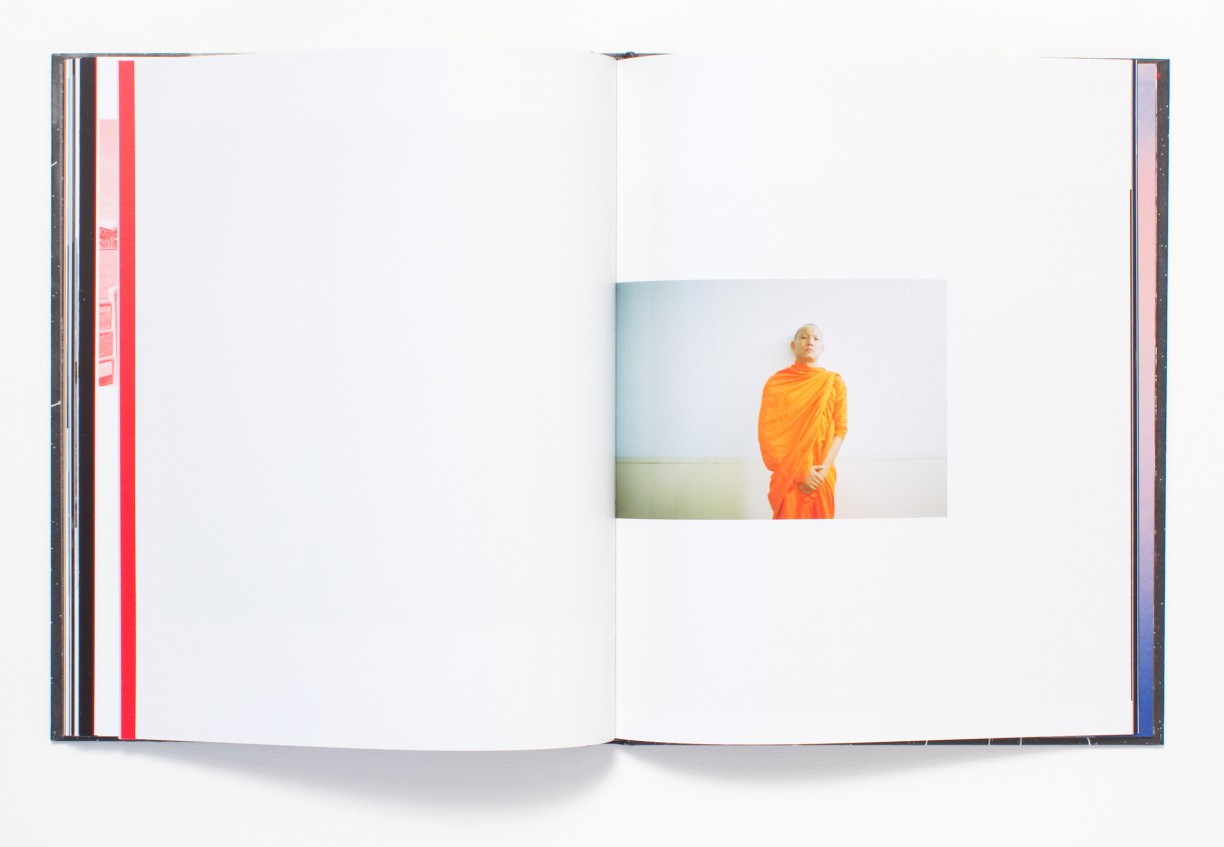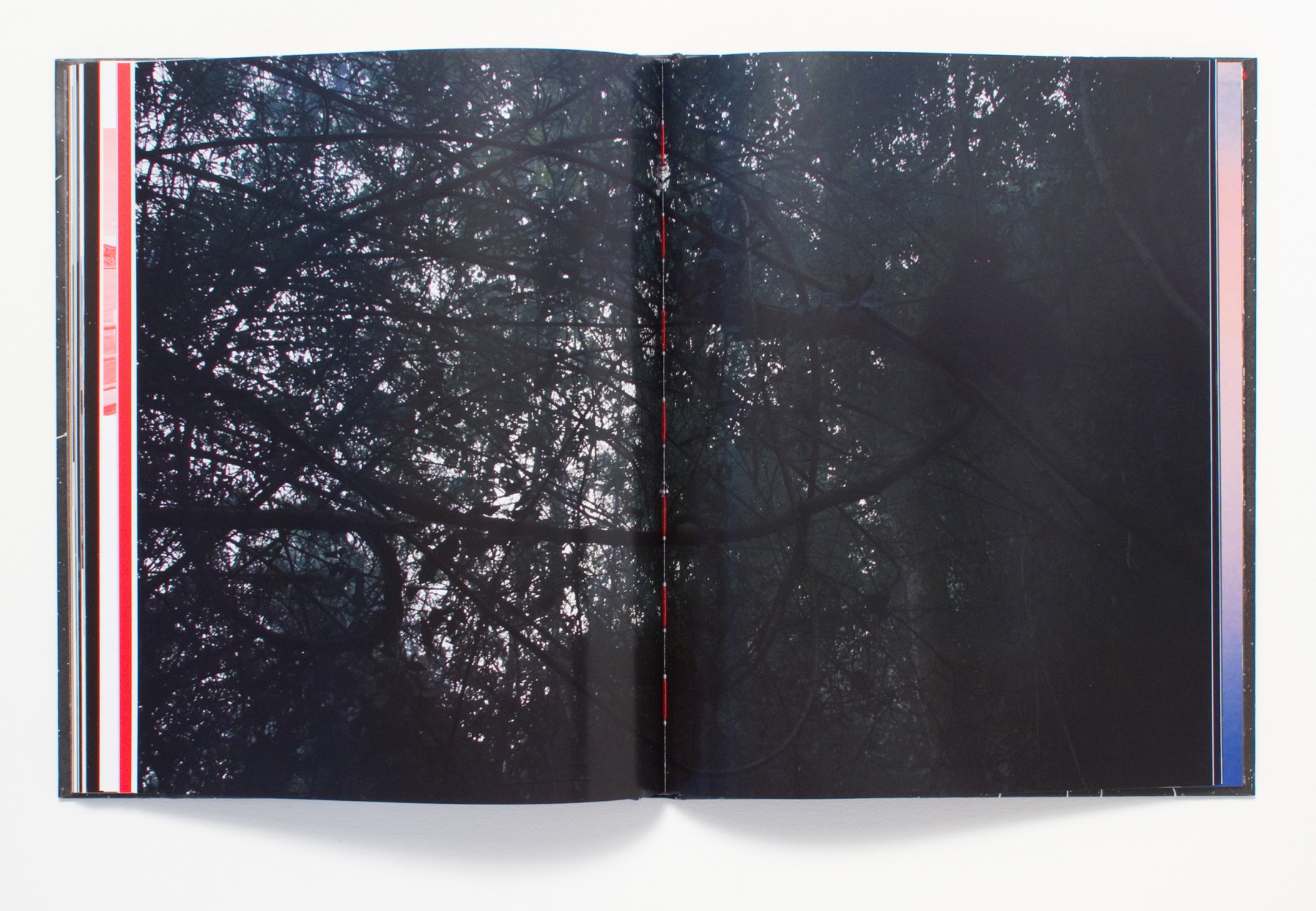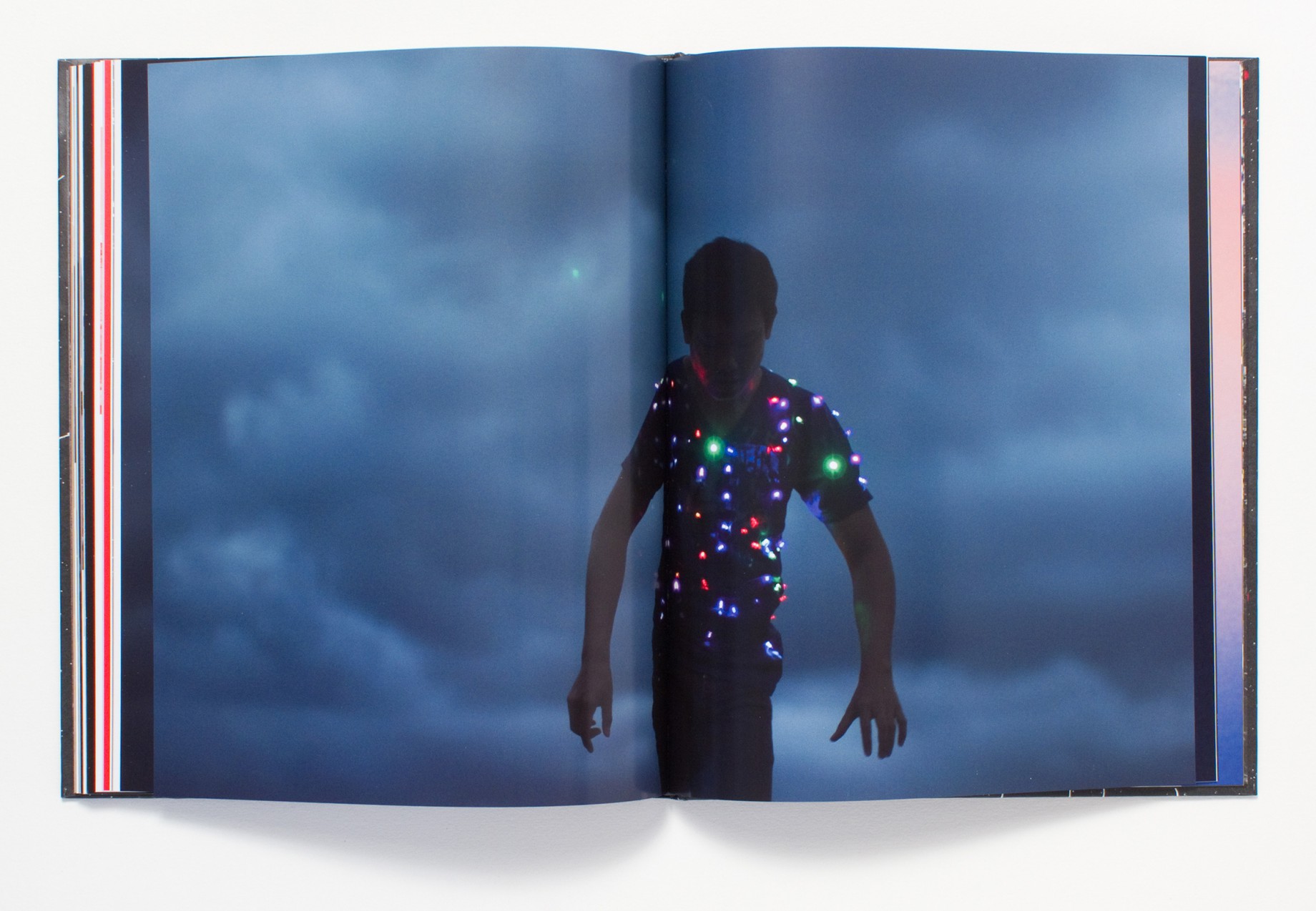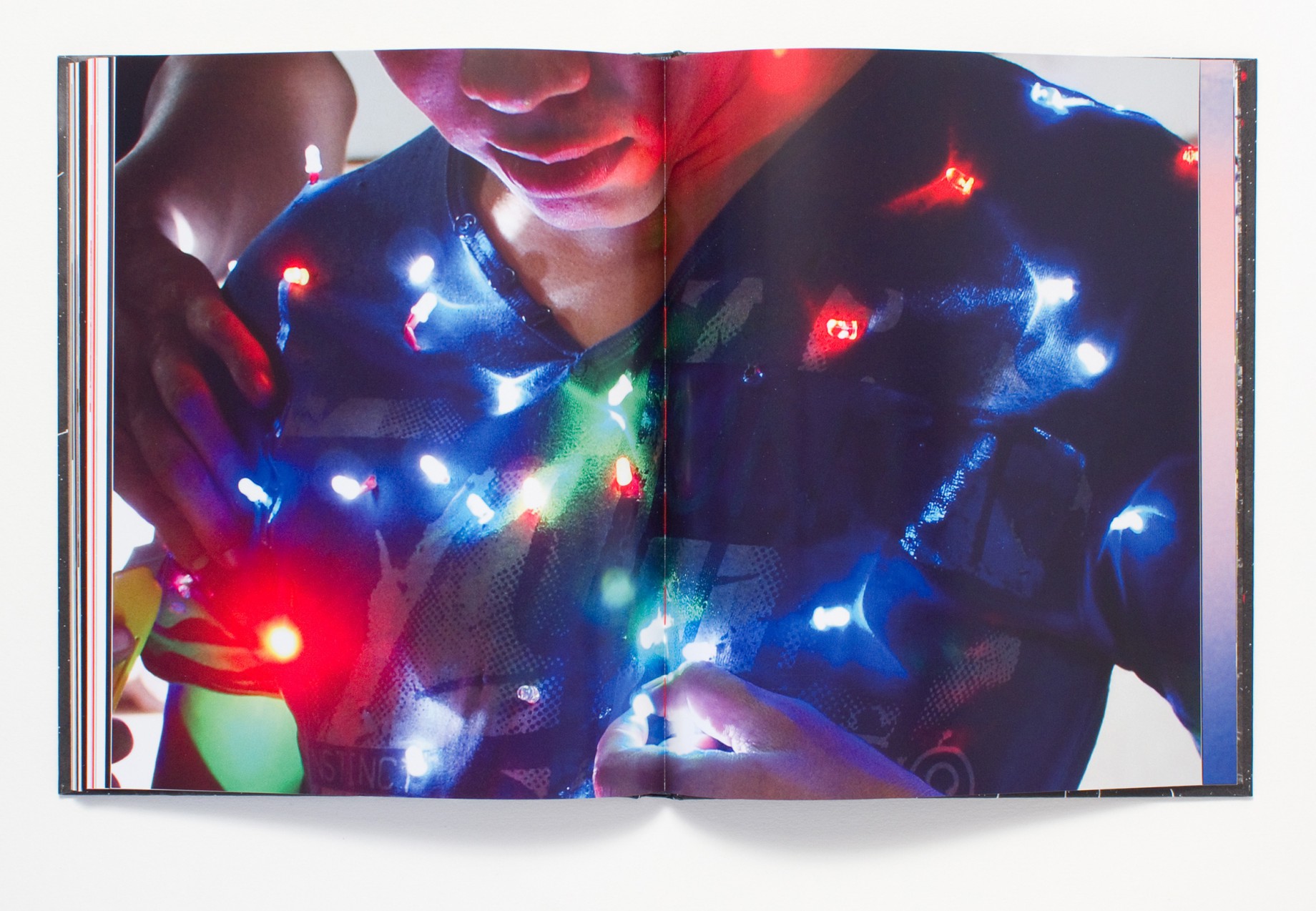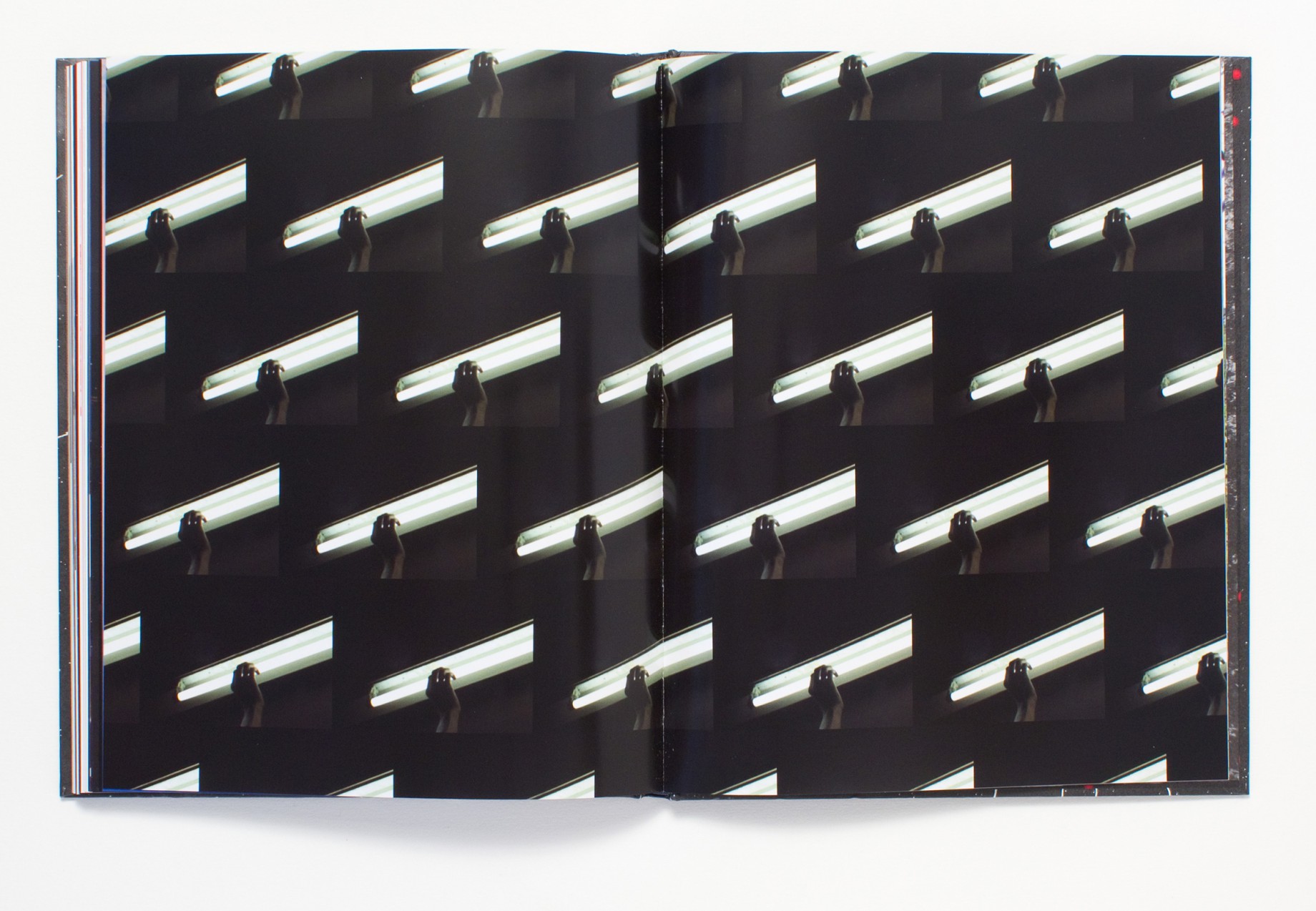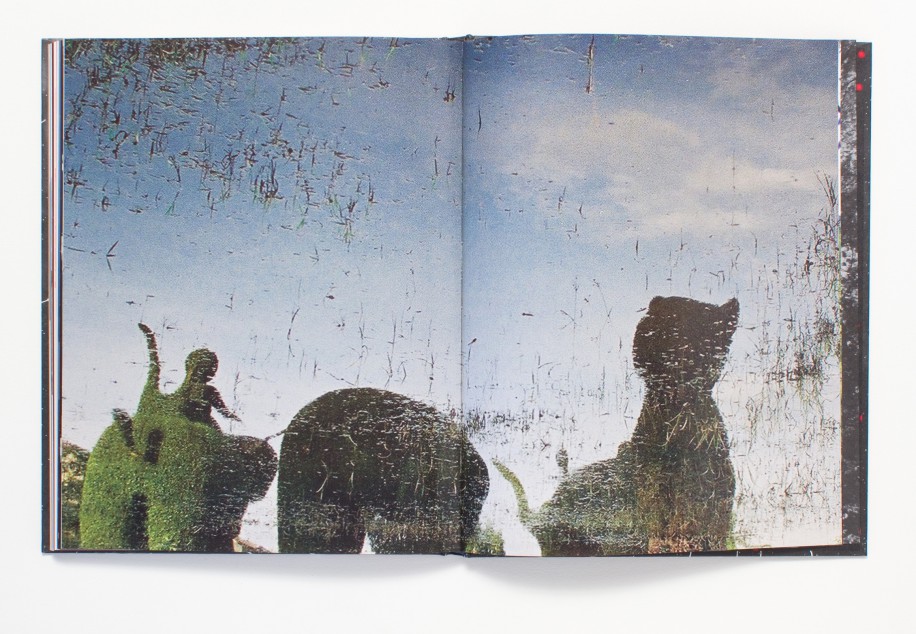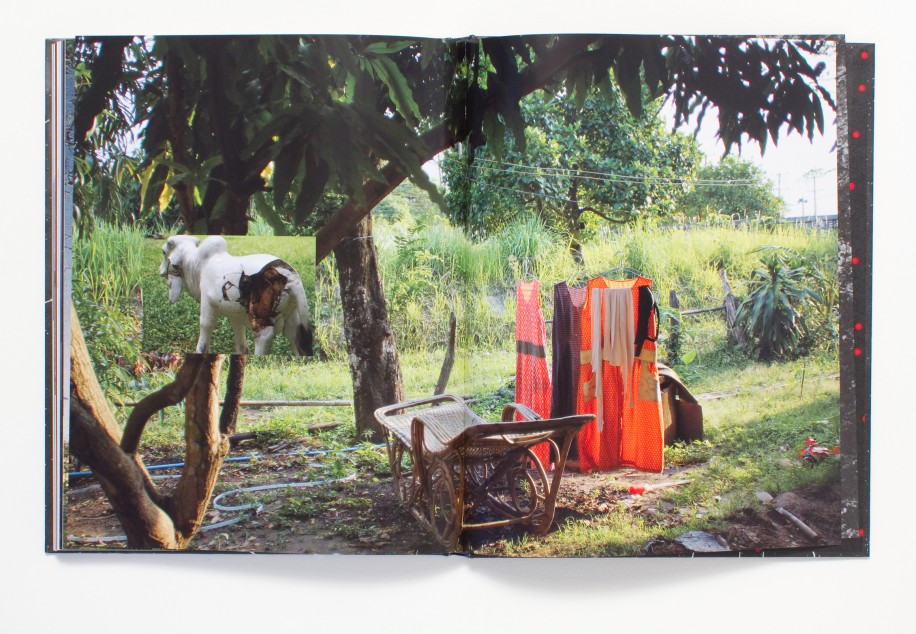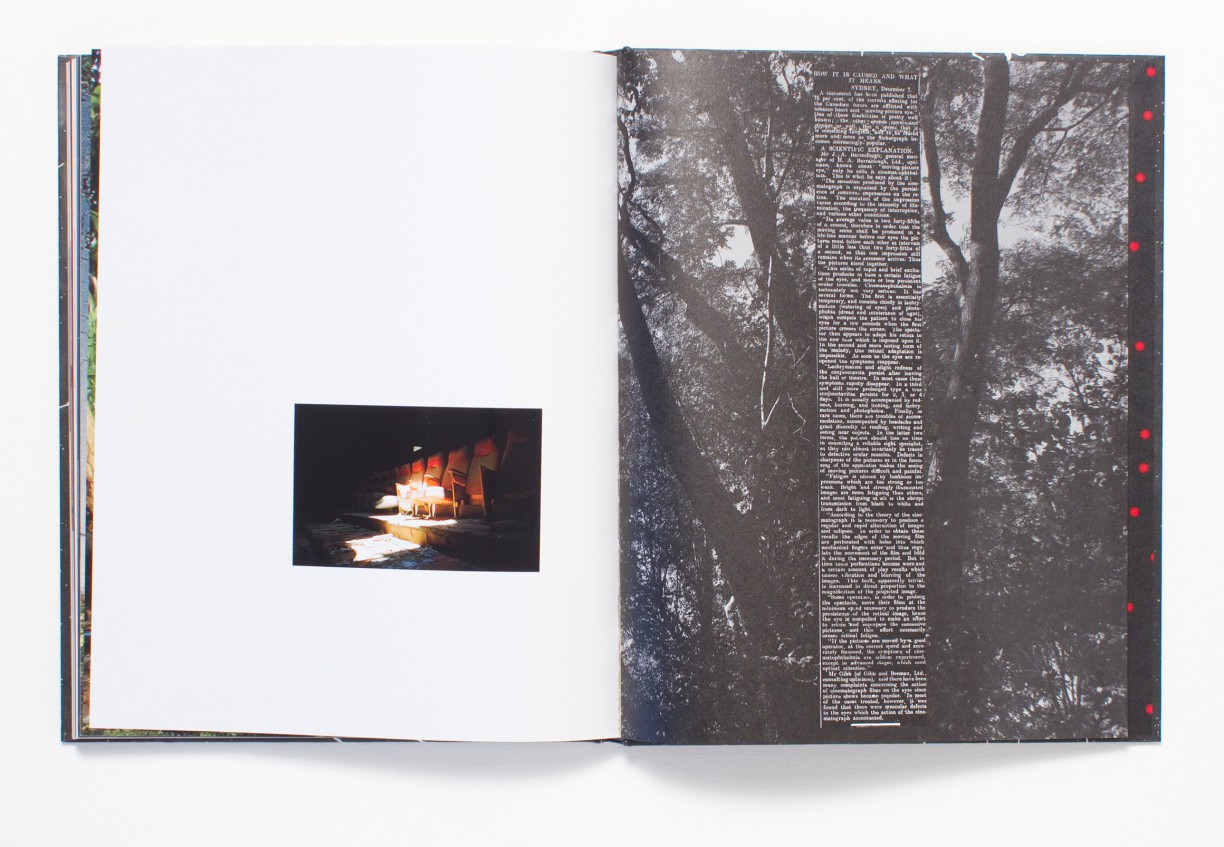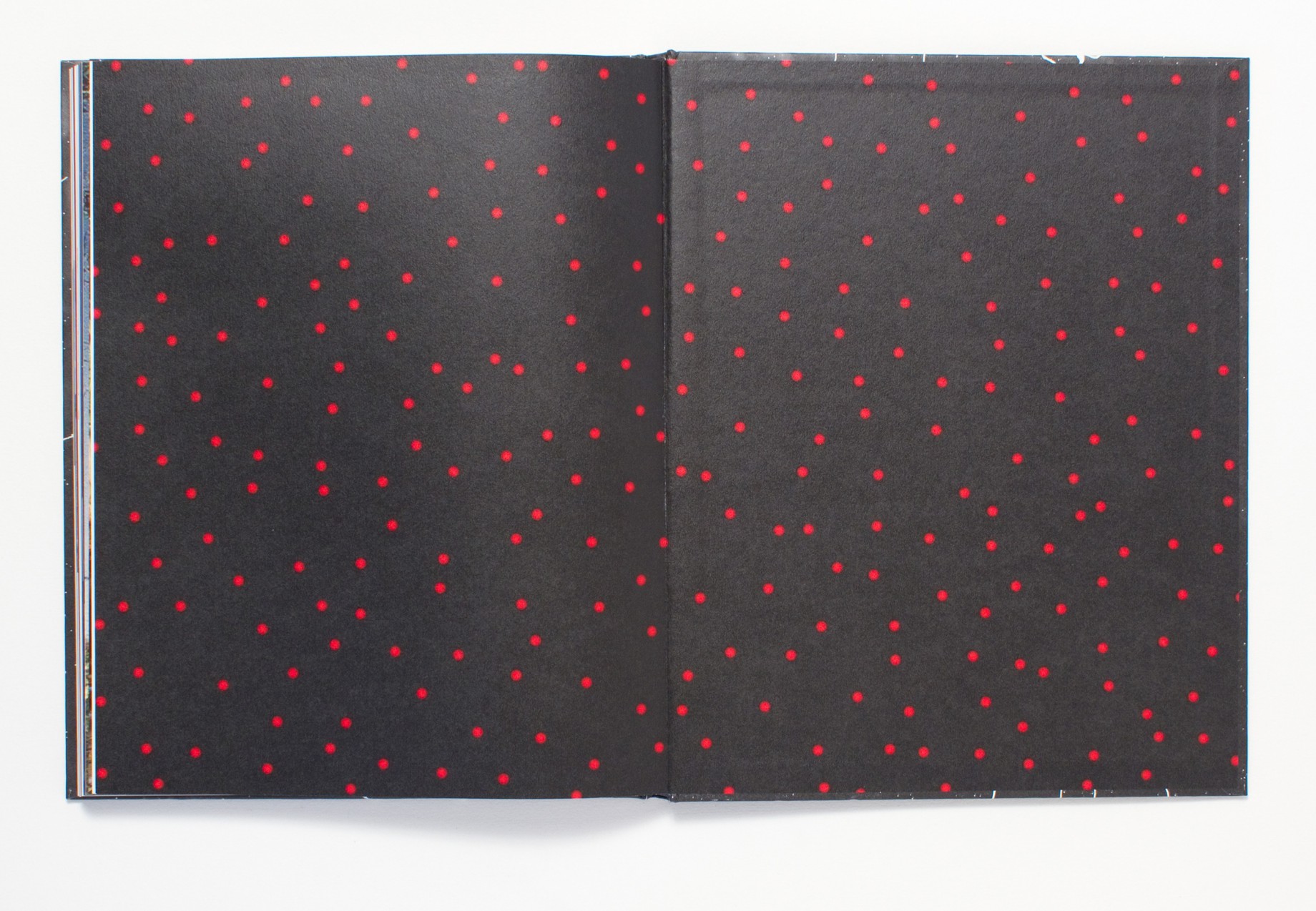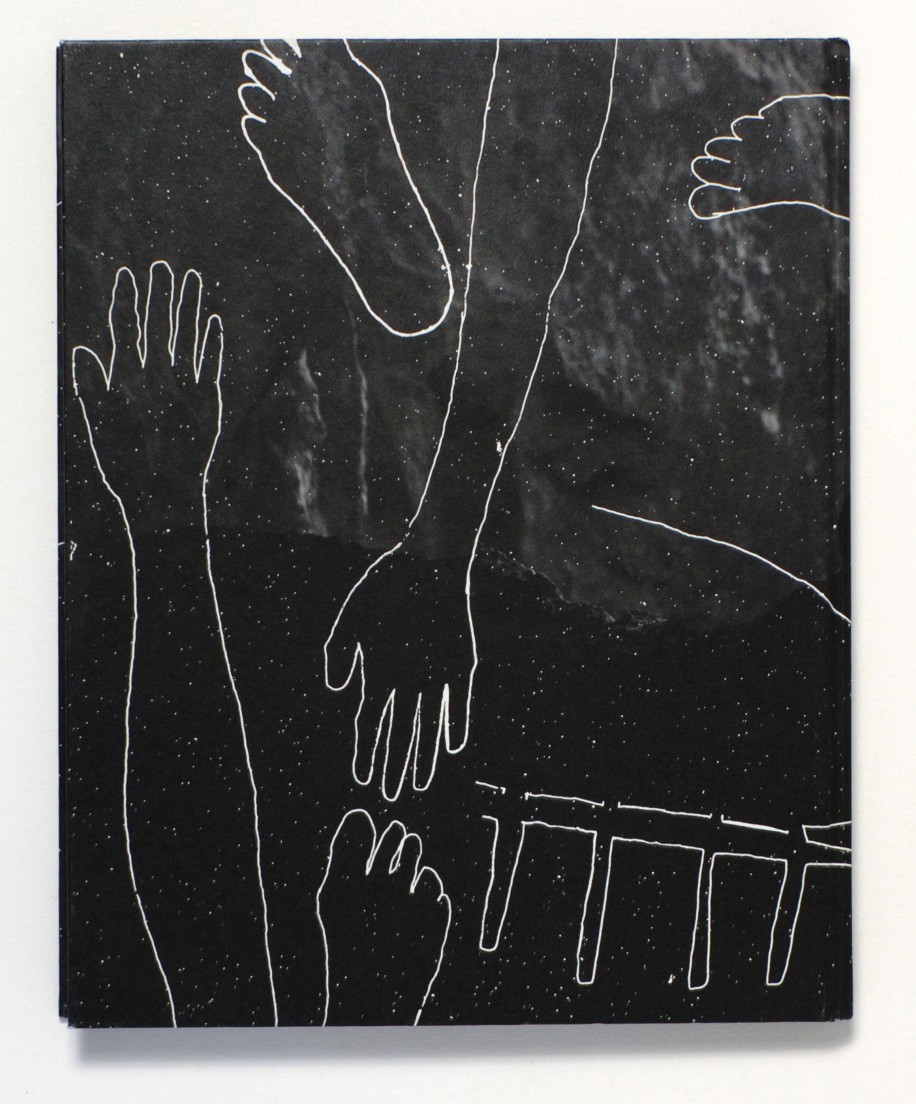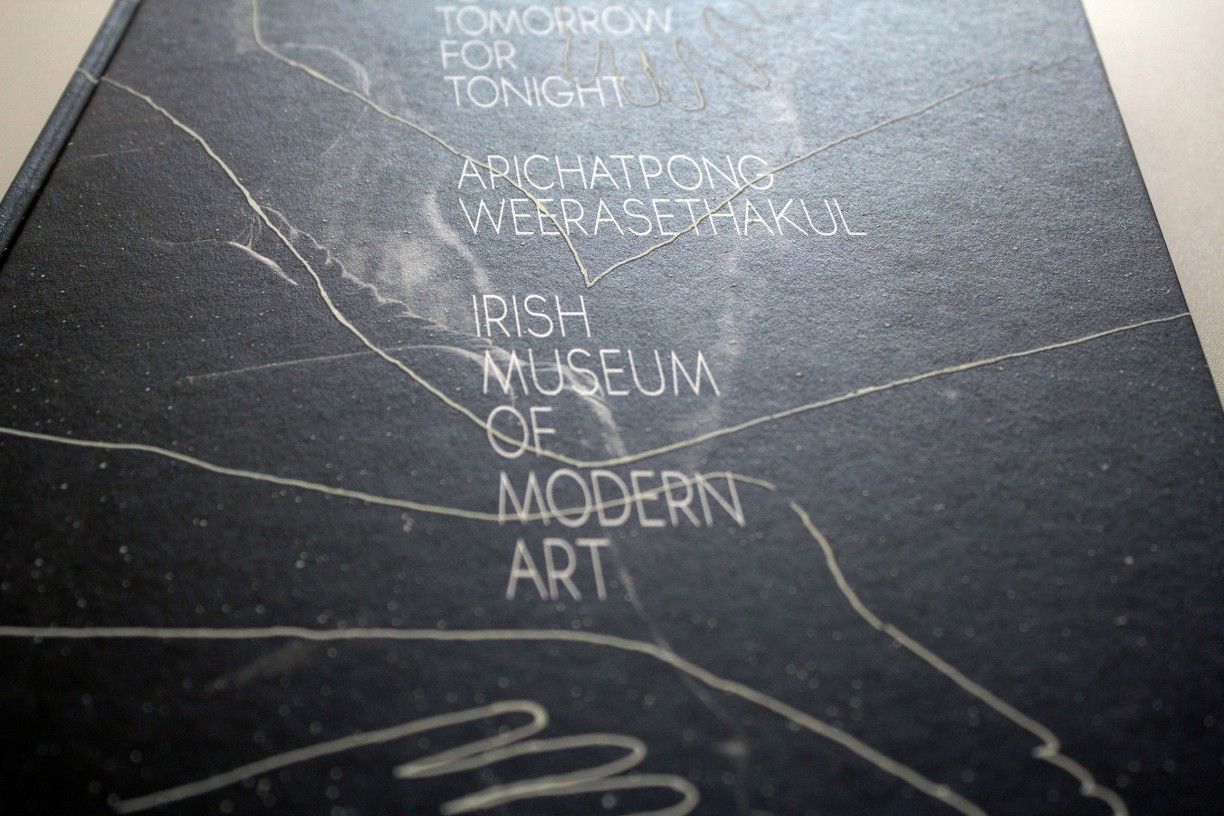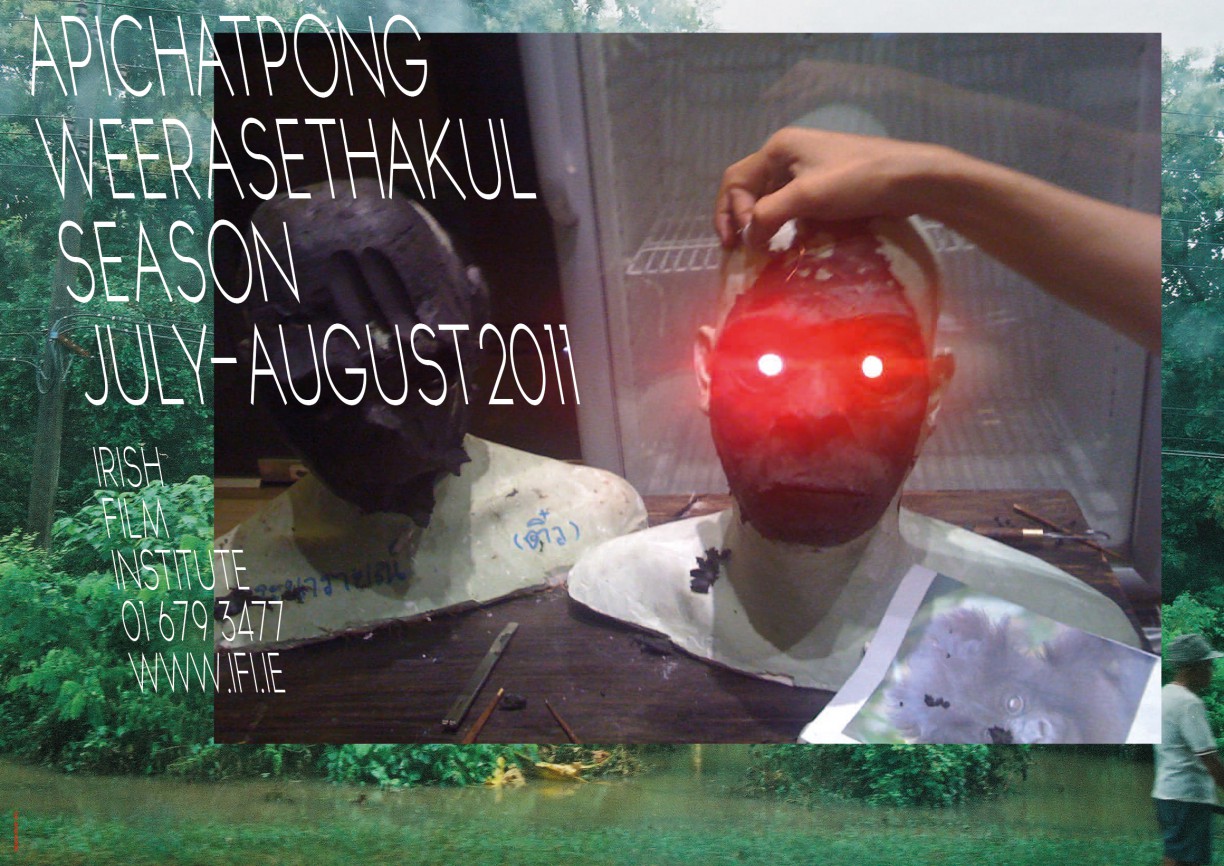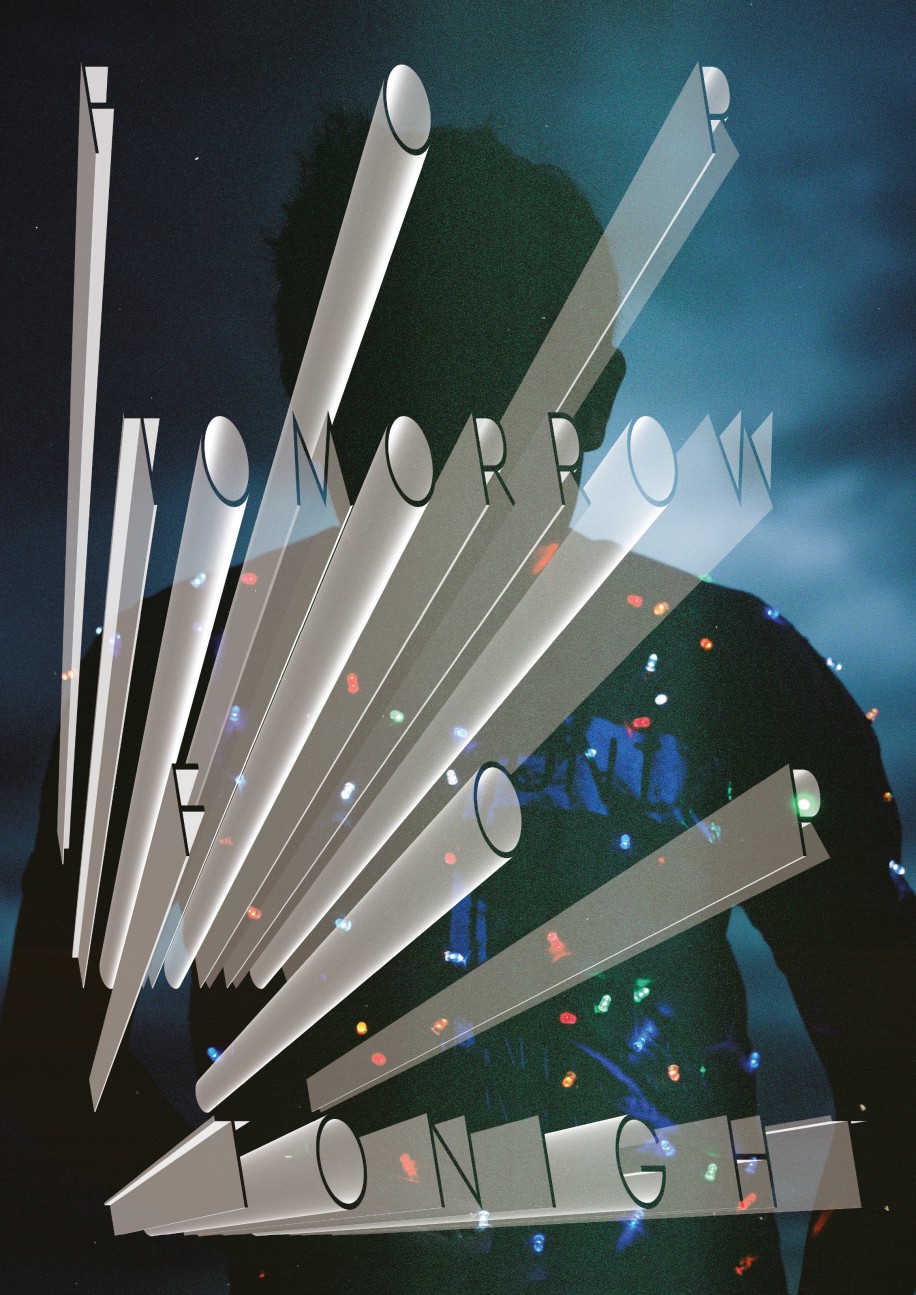Irish Museum of Modern Art
We got a Skype call from the jungle in northern Thailand. It was from the artist and film maker Apichatpong Weerasethakul. His film Uncle Boonmee who can recall his Past Lives had just won the Palm d’Or at Cannes. He was working on a new project that would have its premiere at the Irish Museum of Modern Art in Dublin. He asked us to make “a beautiful book about darkness”. For Tomorrow For Tonight takes us on a journey up the Mekong Delta flood plains, flooded as a result of the electrical dams that run the length of the river from China to Cambodia. It is a book of transformation, of reincarnation, of the comfort of ghosts, of the half-light. Apichatpong tells us that when you shine a light on something — torch light, disco light, cinema light, electric light — you bring into life, into the present, its past and future lives. He tells us that at the very darkest centre of the jungle, there is a flashing red beacon set to the sounds of a techno beat. The colour of the Mekong, he says, is from the millions of ancestors once cremated and now suspended in its currents, and each time the river floods, it deposits these ancestors throughout the land, and we build houses and hotels and karaoke bars and cinemas from this mud, and then we illuminate these buildings with electric light.
For Tomorrow For Tonight features his friend, the seamstress Jenjira Pongpass. She has been having operations on her leg after a motorbike accident, and we find her with aerial-like rods protruding from her leg. In the film they attach small lights to them and wire her up to the jungle. Apichatpong tells a story of how he and Jenjira are walking in the jungle at night. They have to stop as her leg is in great pain. He shines a torch on it while she massages it to get the circulation going. Afterwards, they see floating retinal memory images of her limbs, guiding them through the dark.
On the outside of the book, a silhouette sits at the mouth of a cave. Across the surface is a line drawing, like cave paintings or star charts of dismembered constellations. It is a tracing that Jenjira made for us of her own legs, hands and arms, including the metal rods. She traced them out while sitting on the floor of her once-flooded workshop home in the jungle, using the paper she uses for her dress-patterns. When you switch the lights off, these limbs glow in the dark.
Printed by Pureprint, Sussex. The cover features Jenjira’s drawing screenprinted in glow-in-the-dark ink. The exhibition was accompanied by a film season at the IFI.
